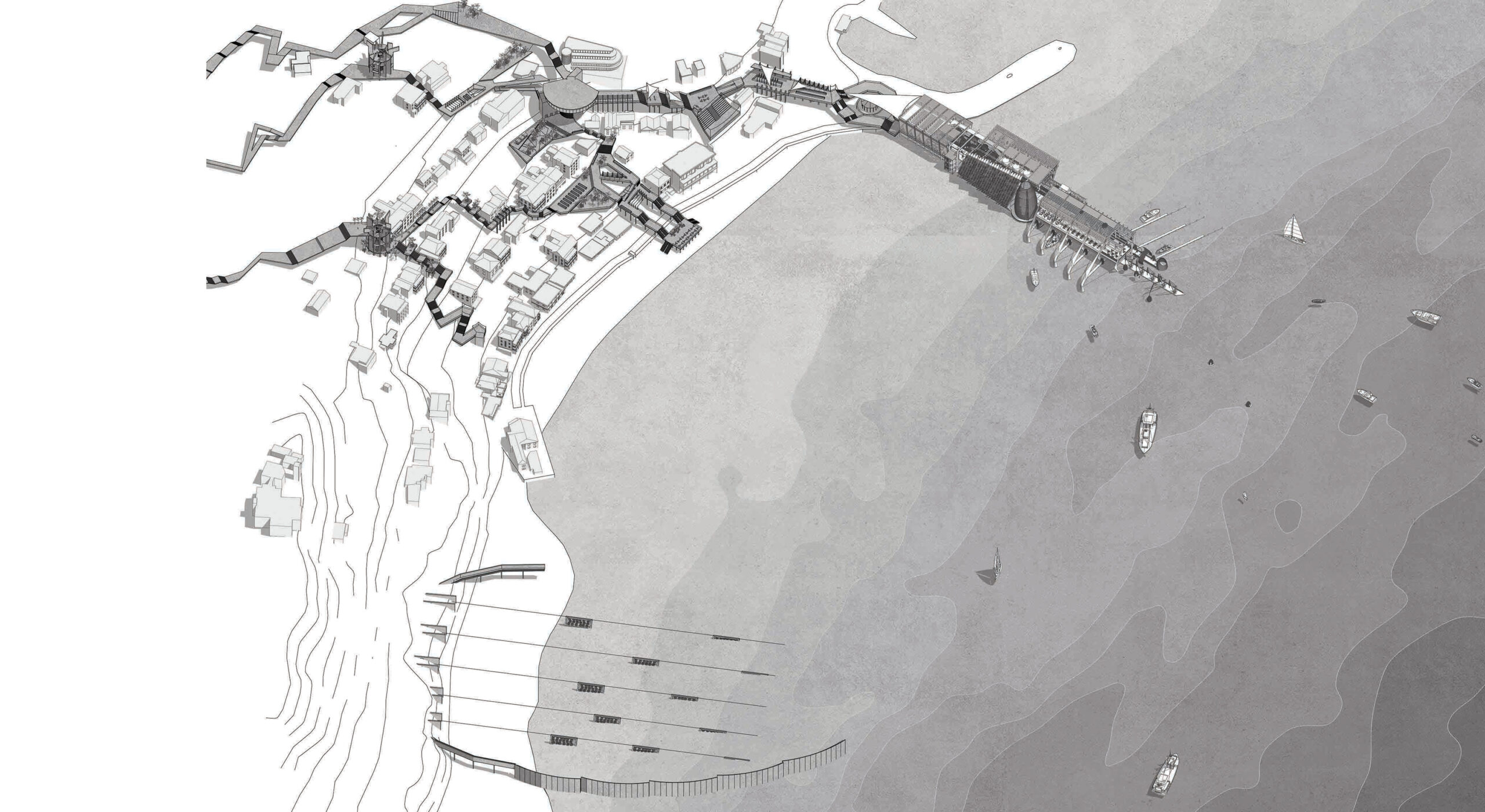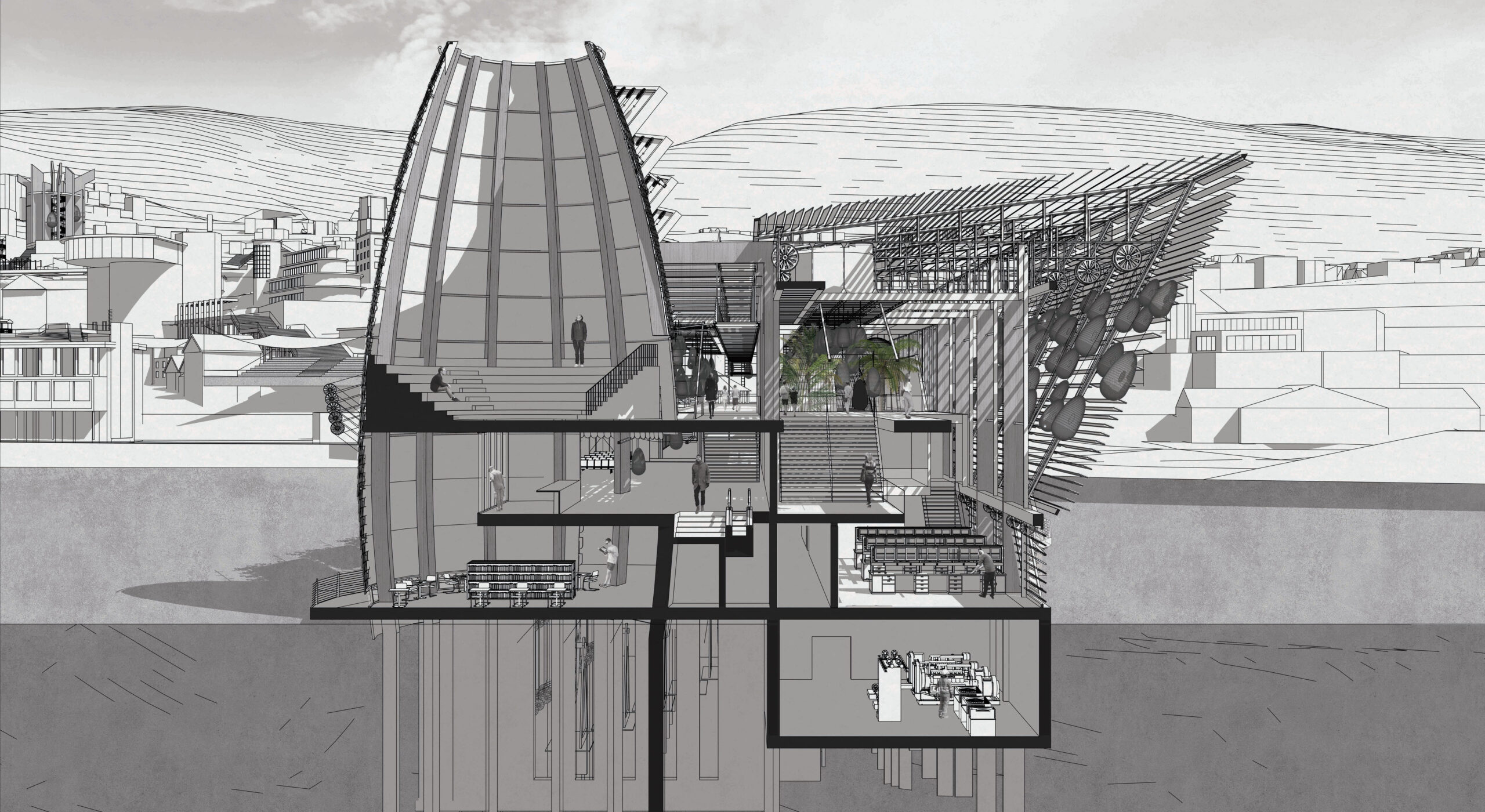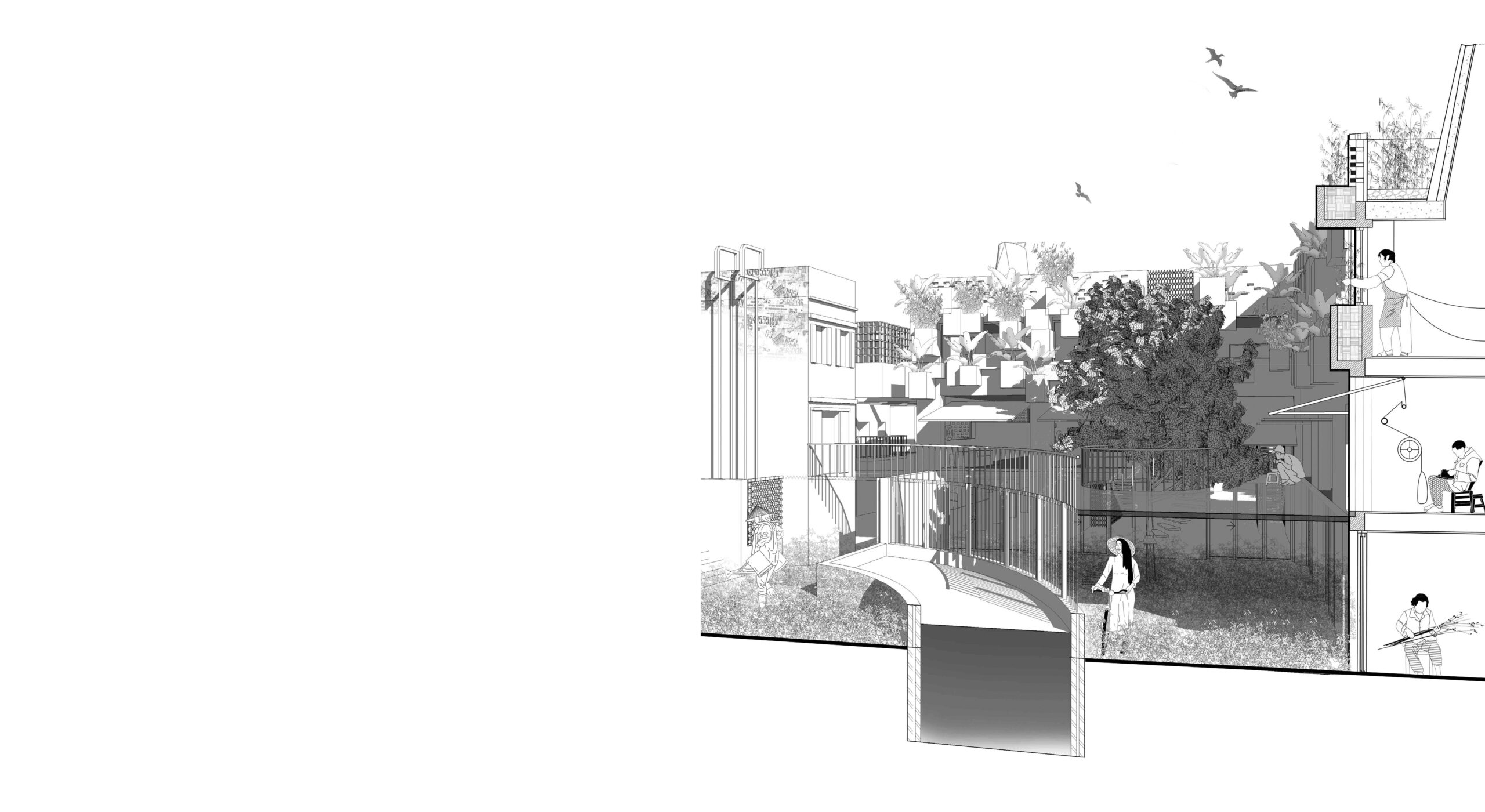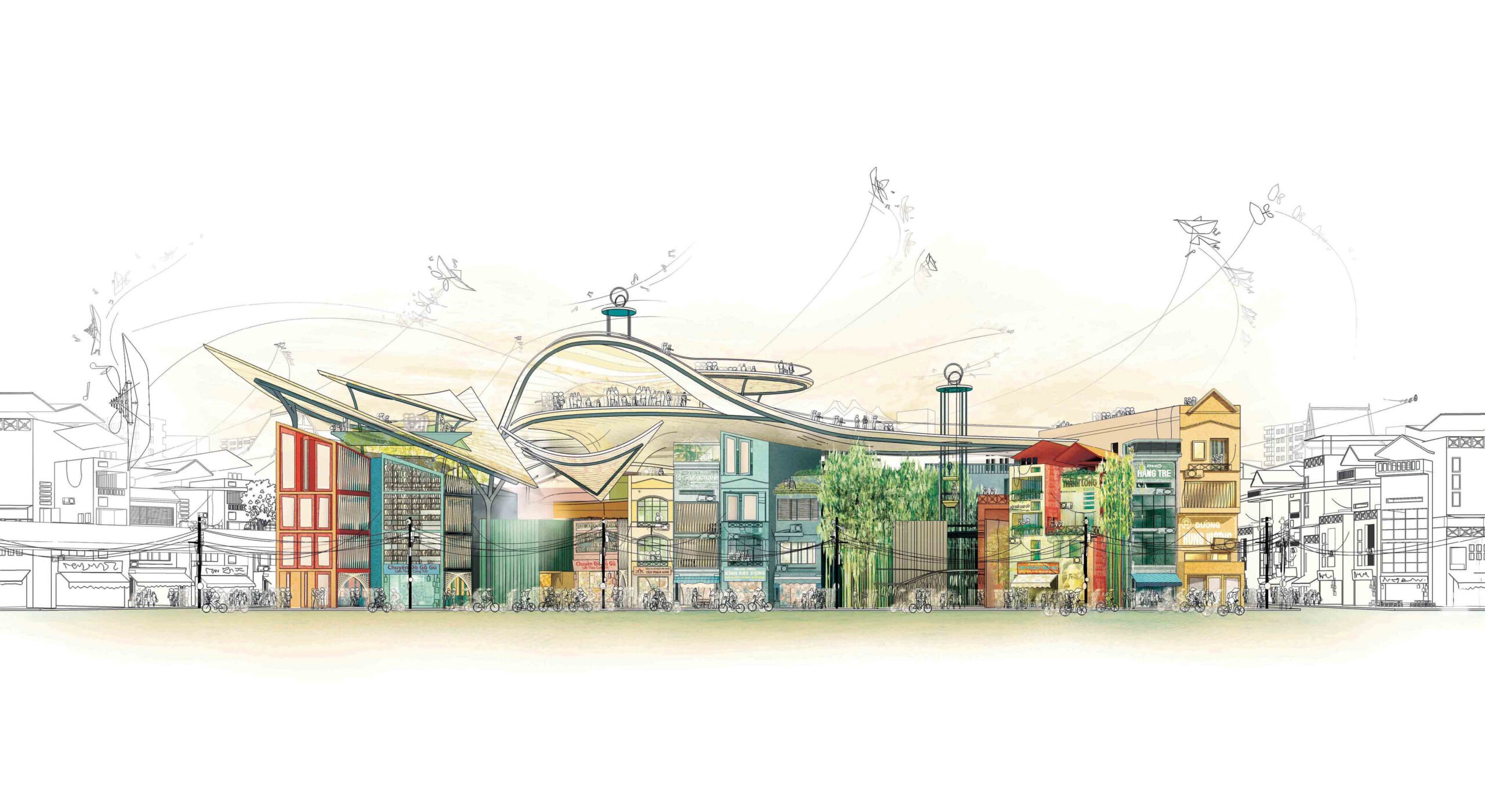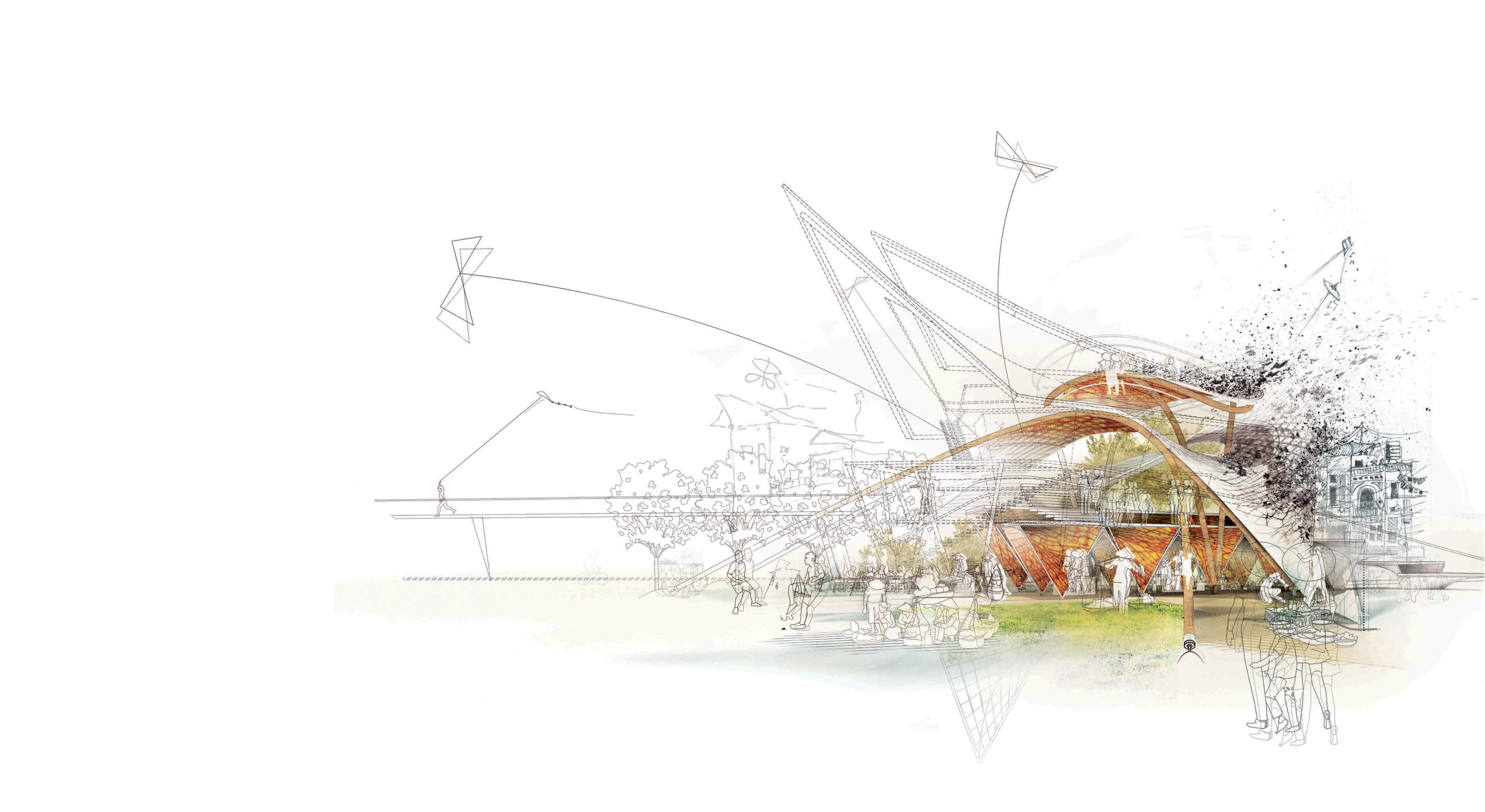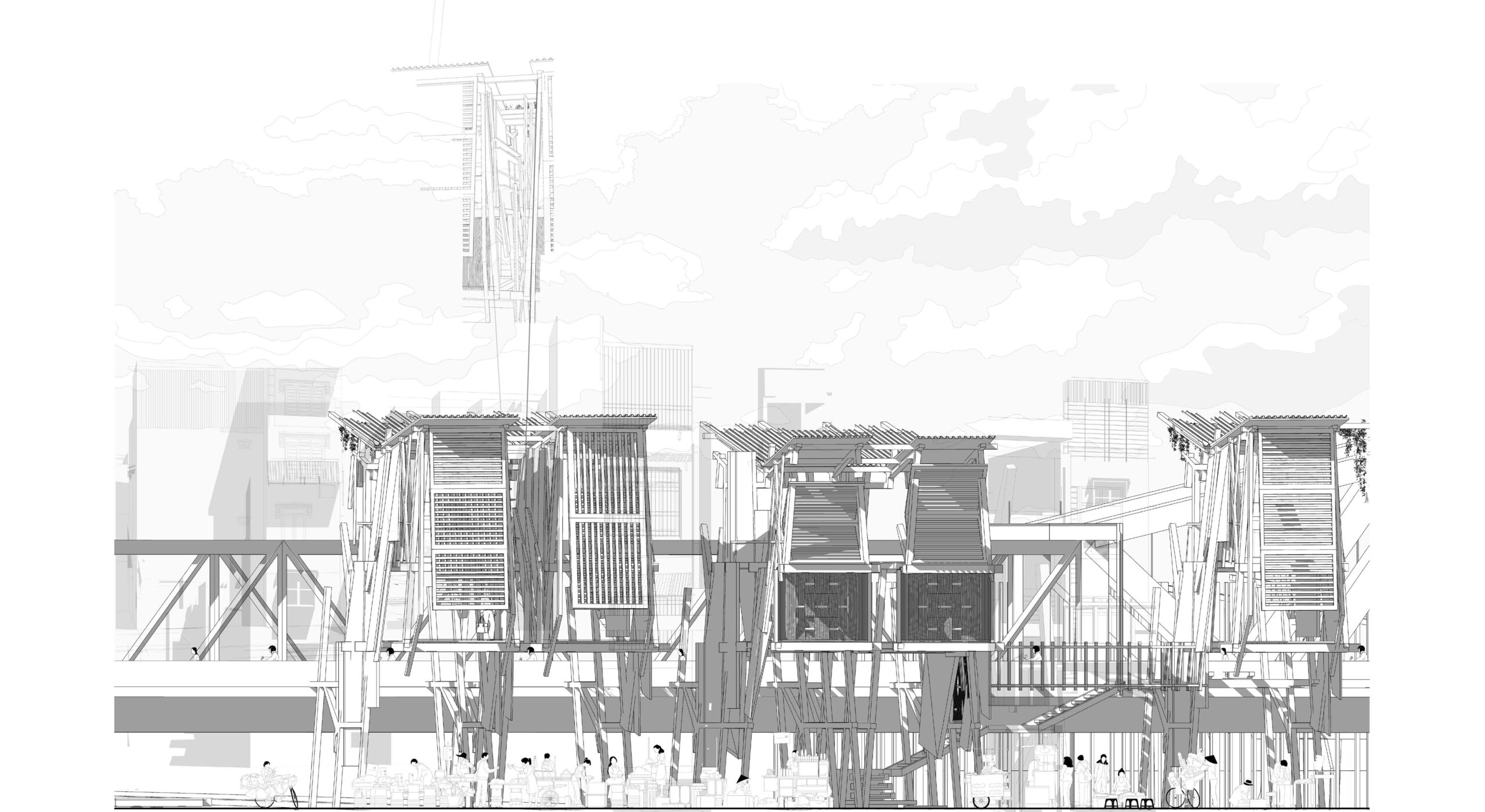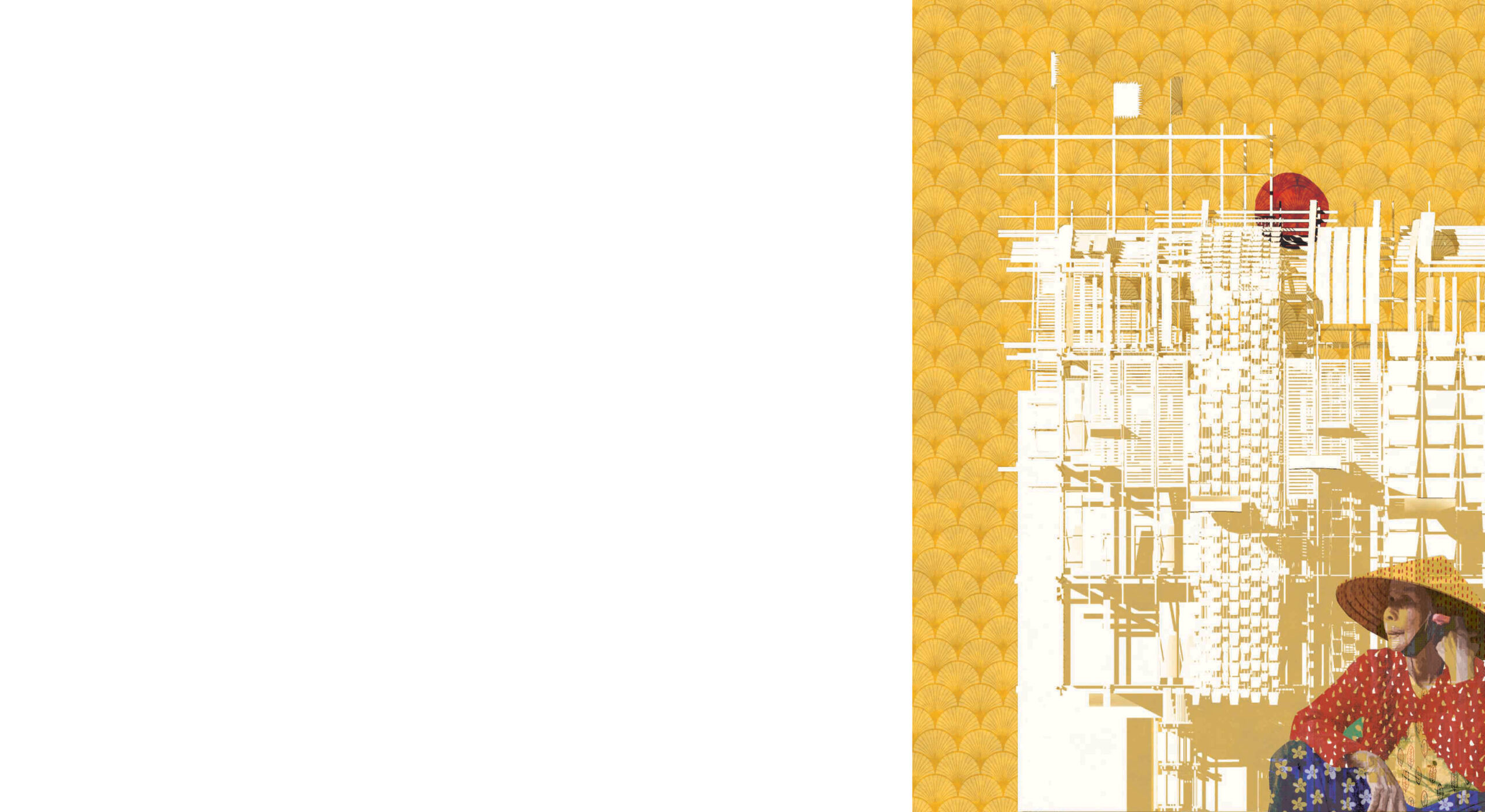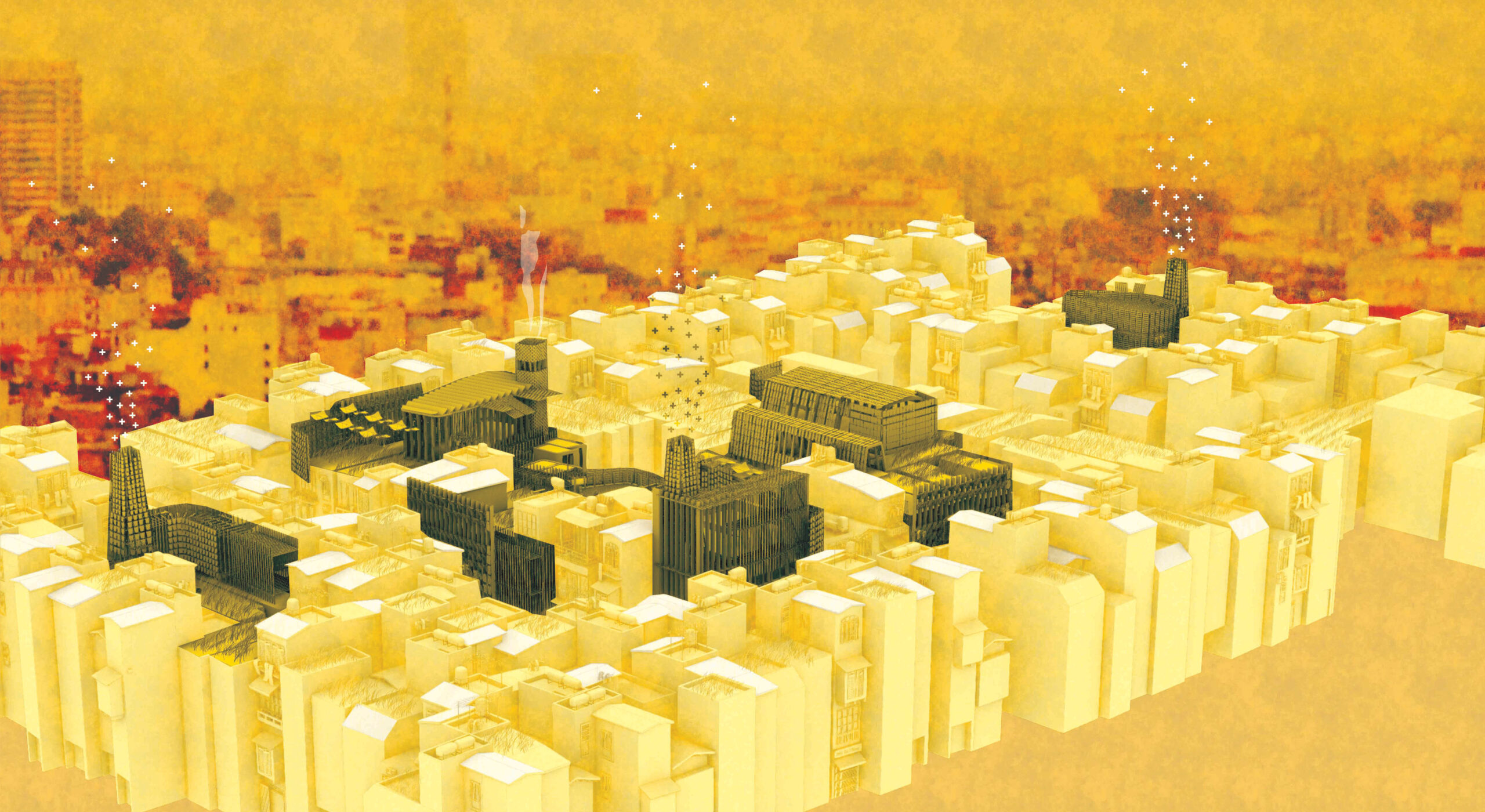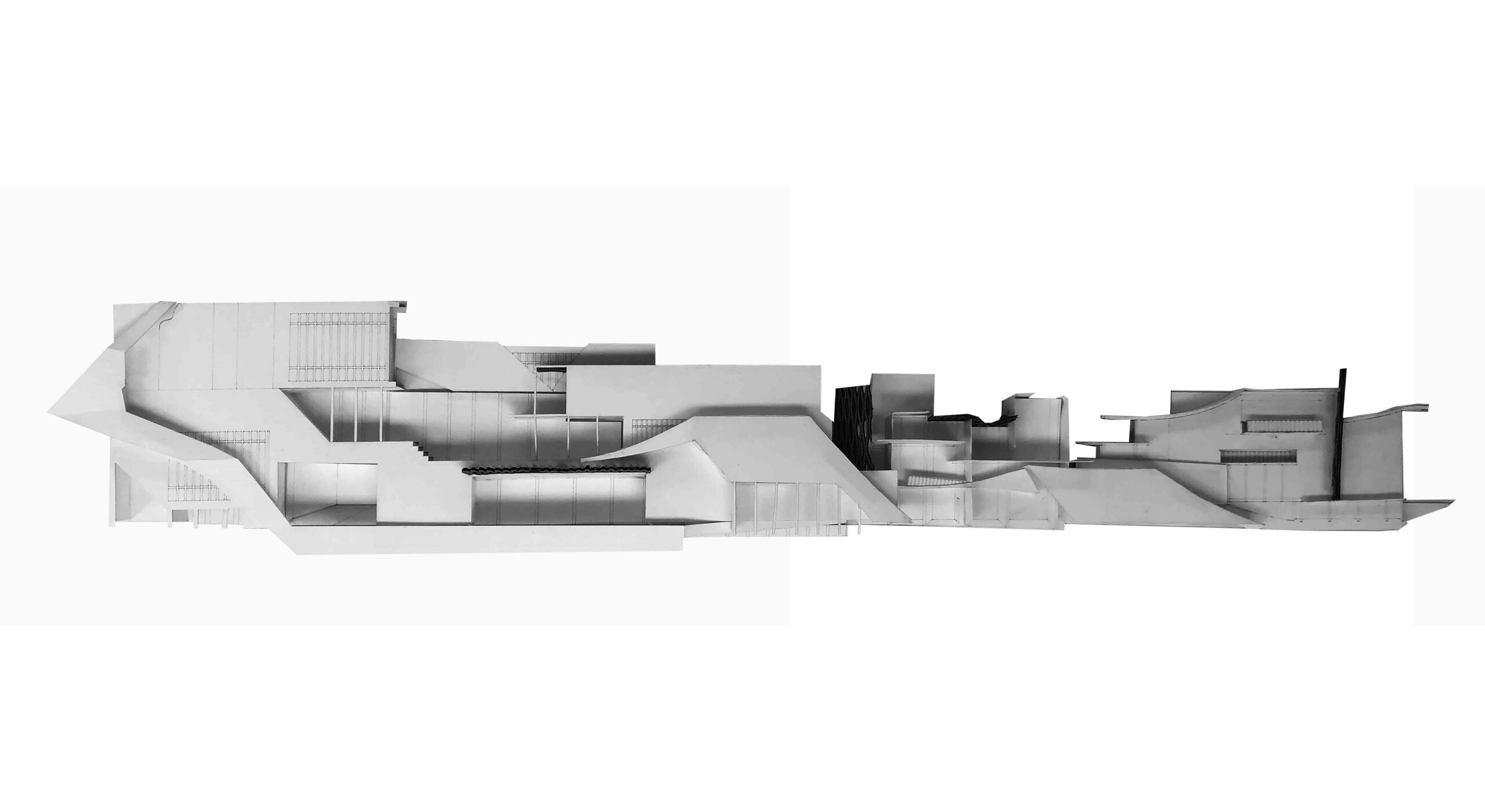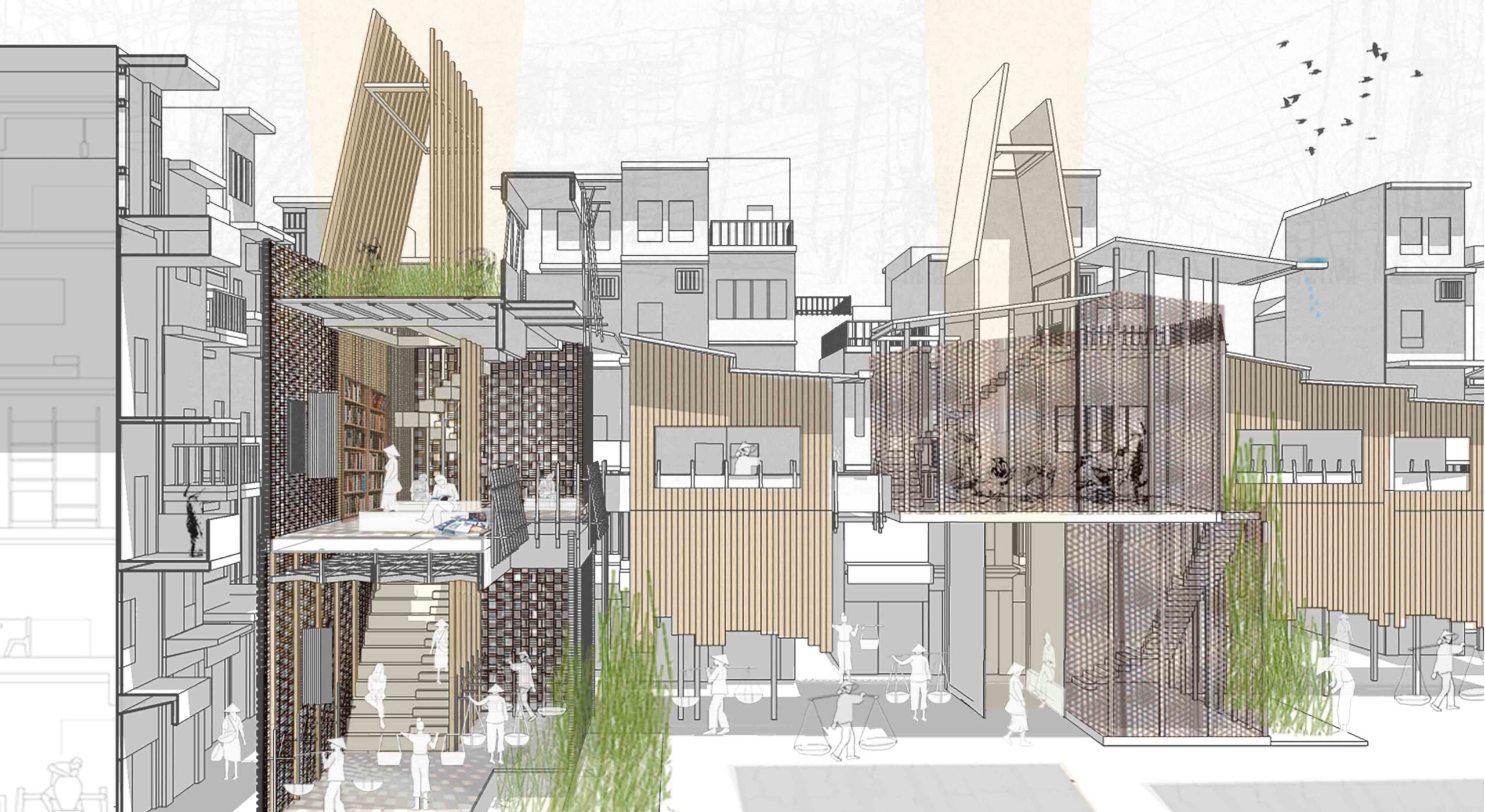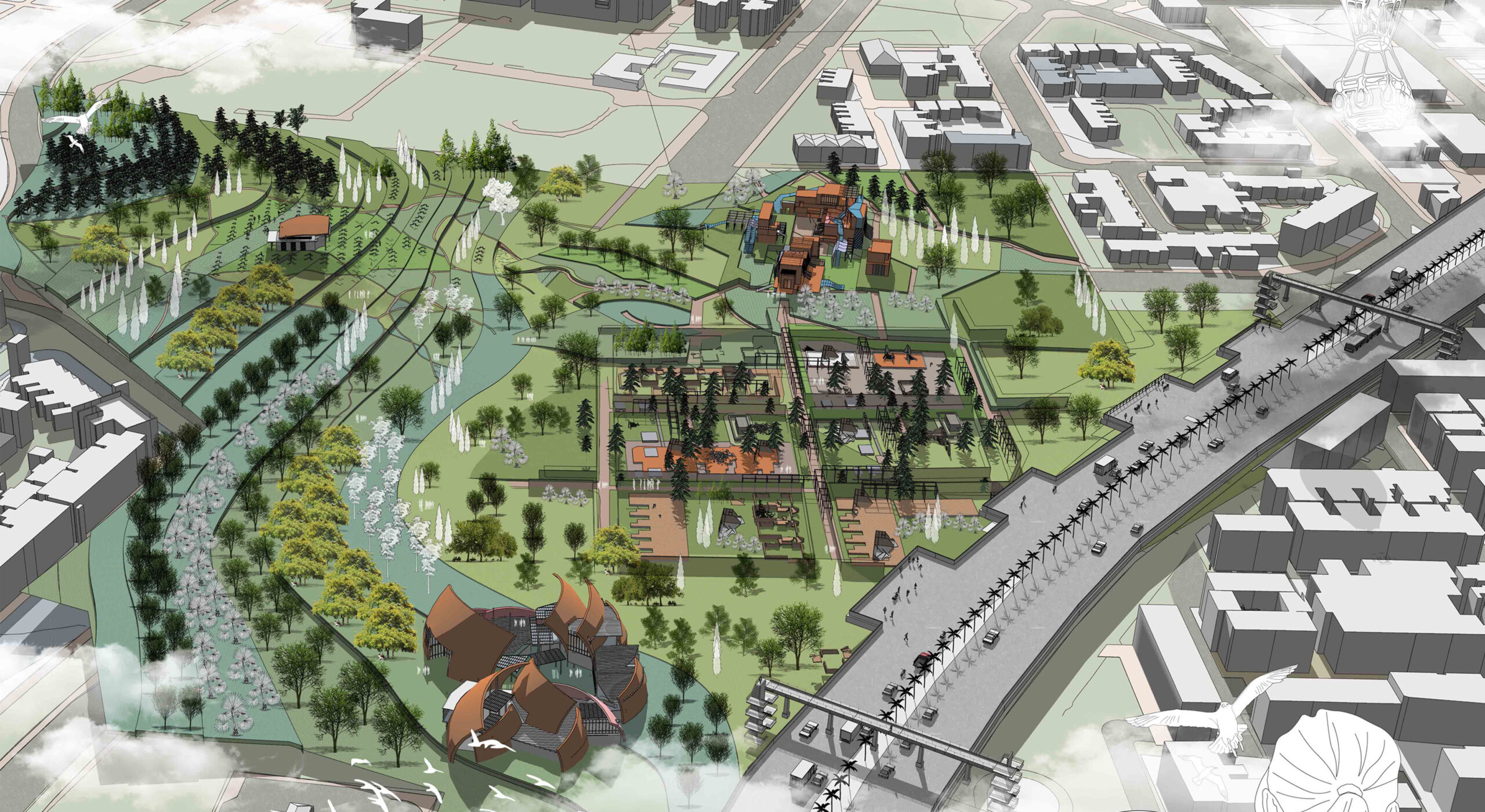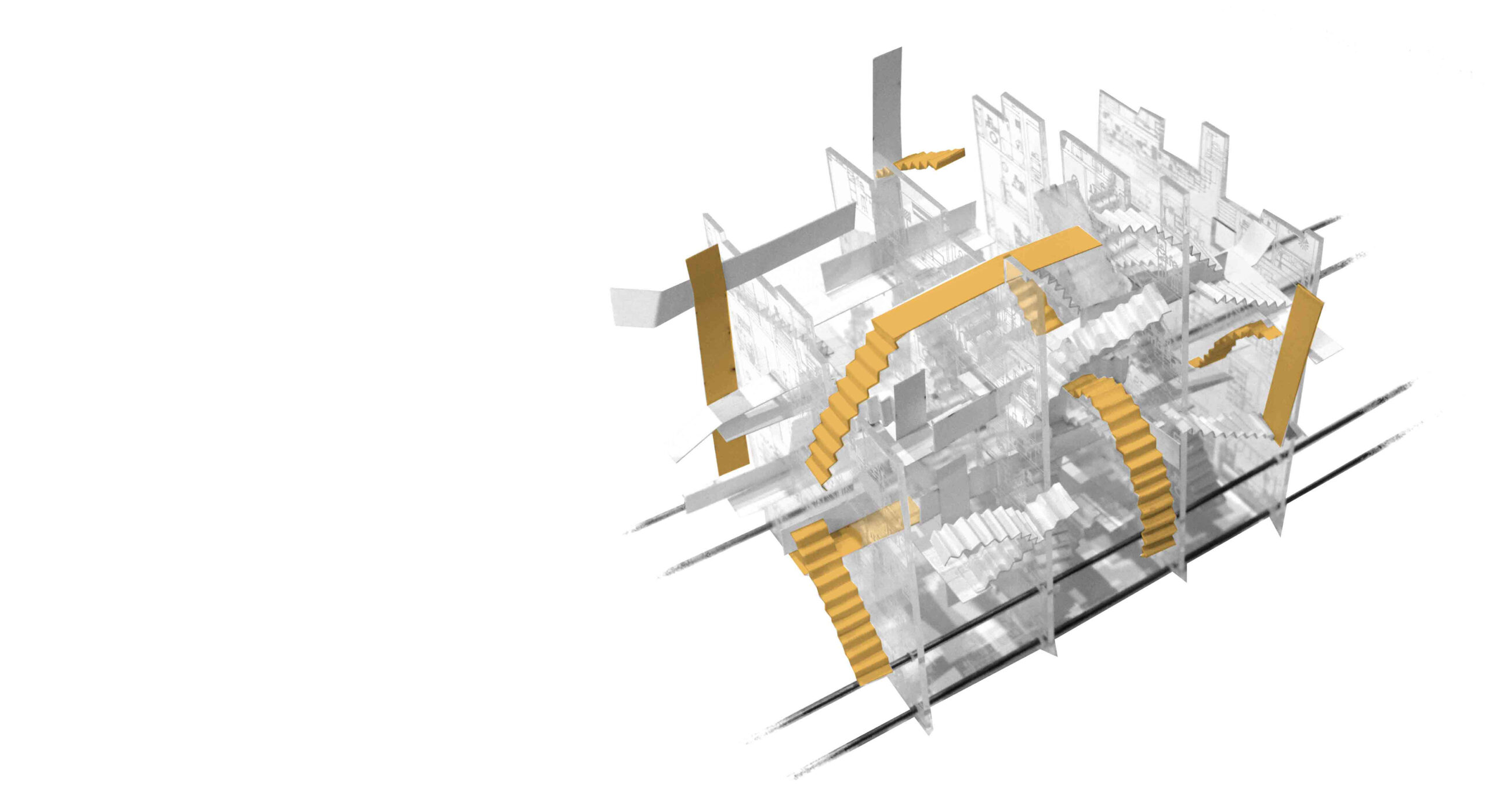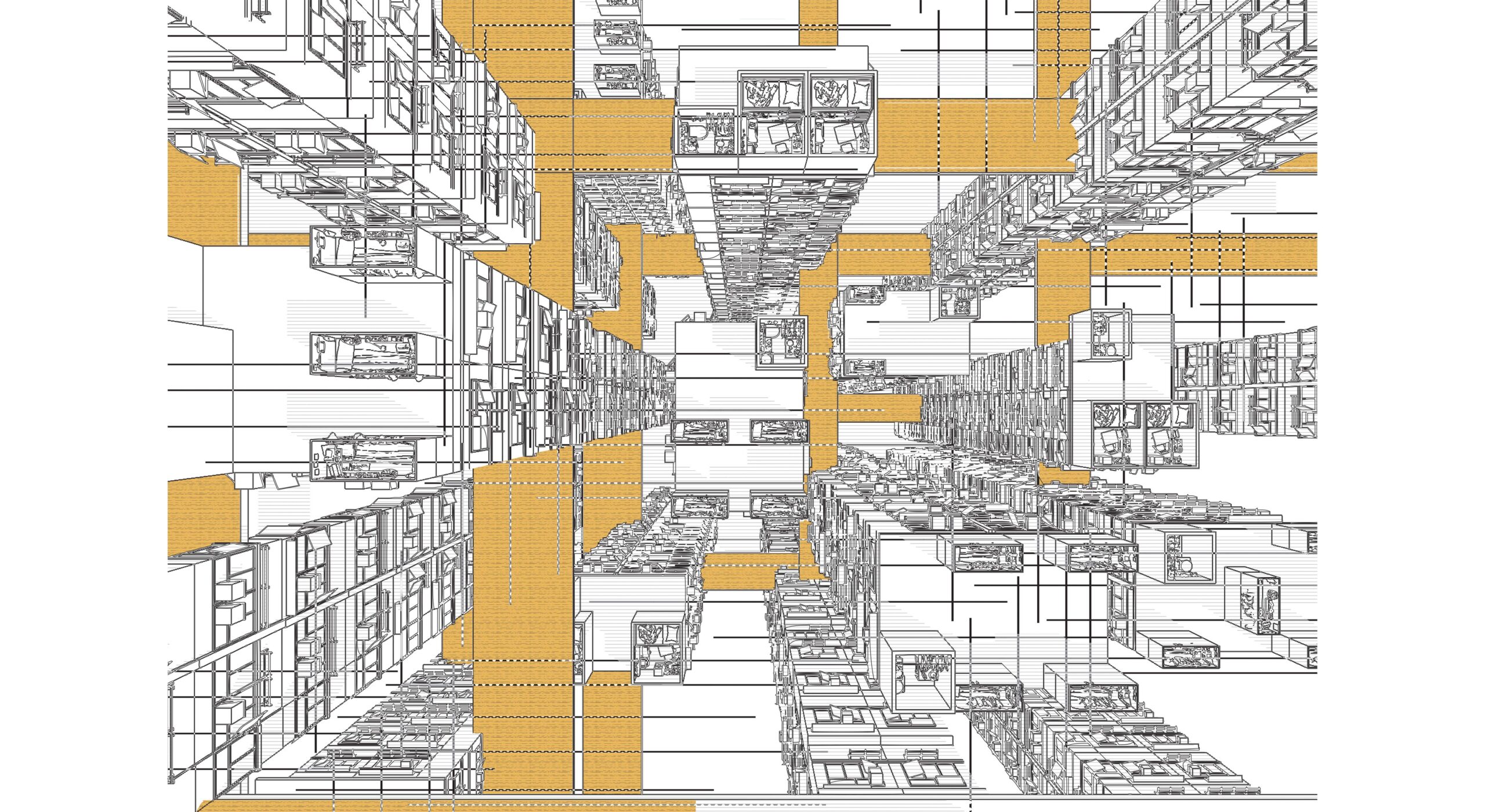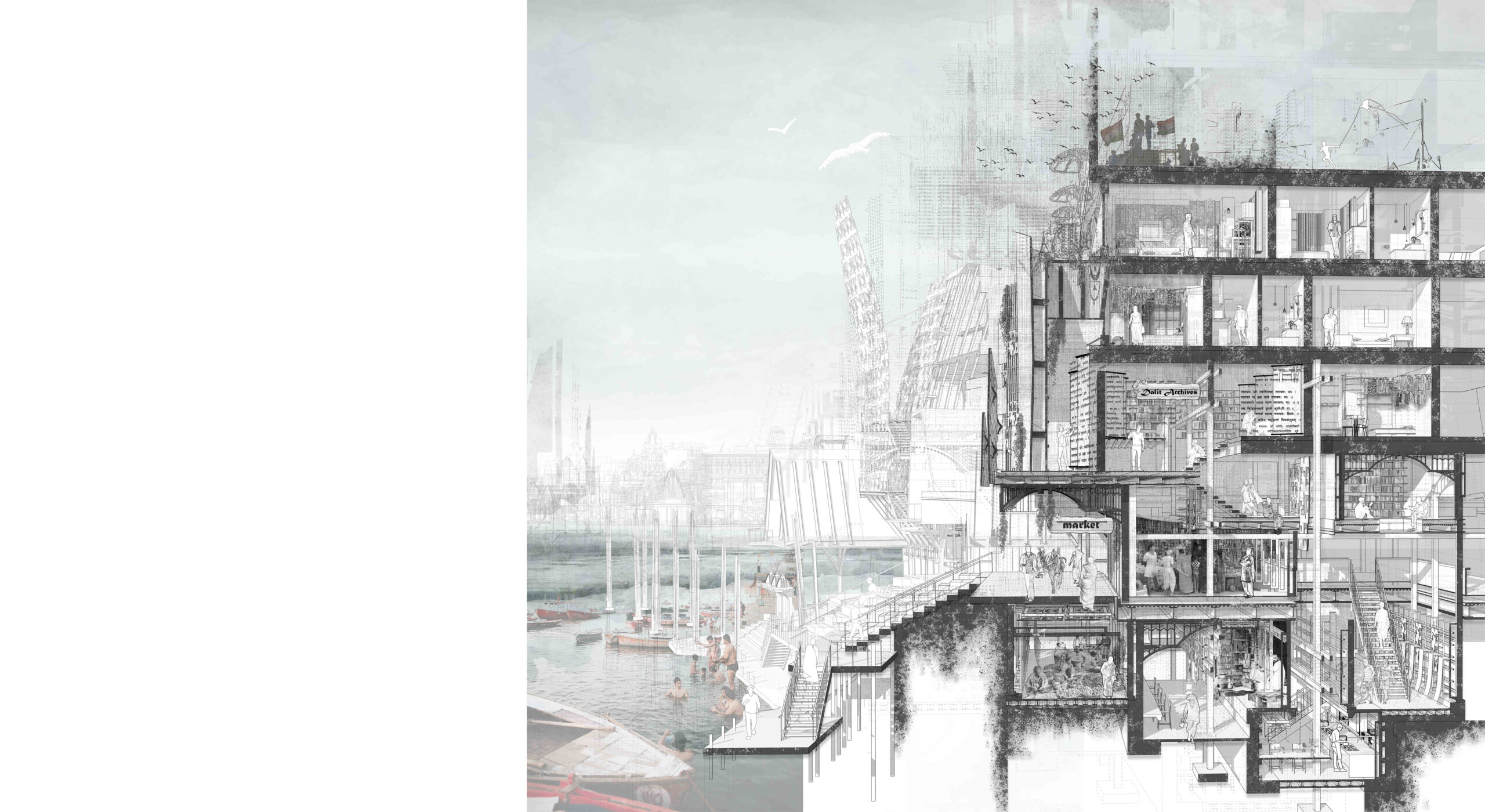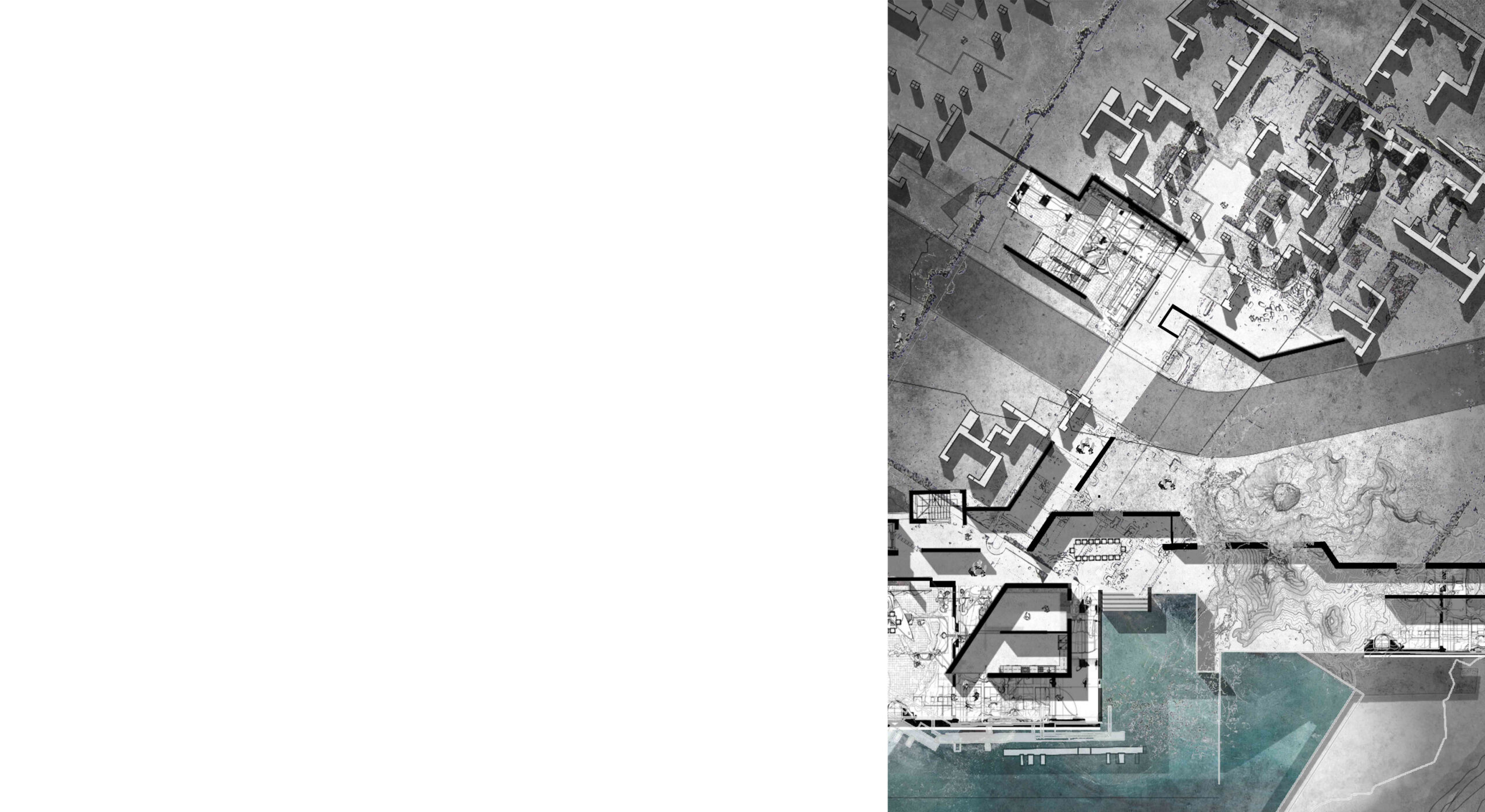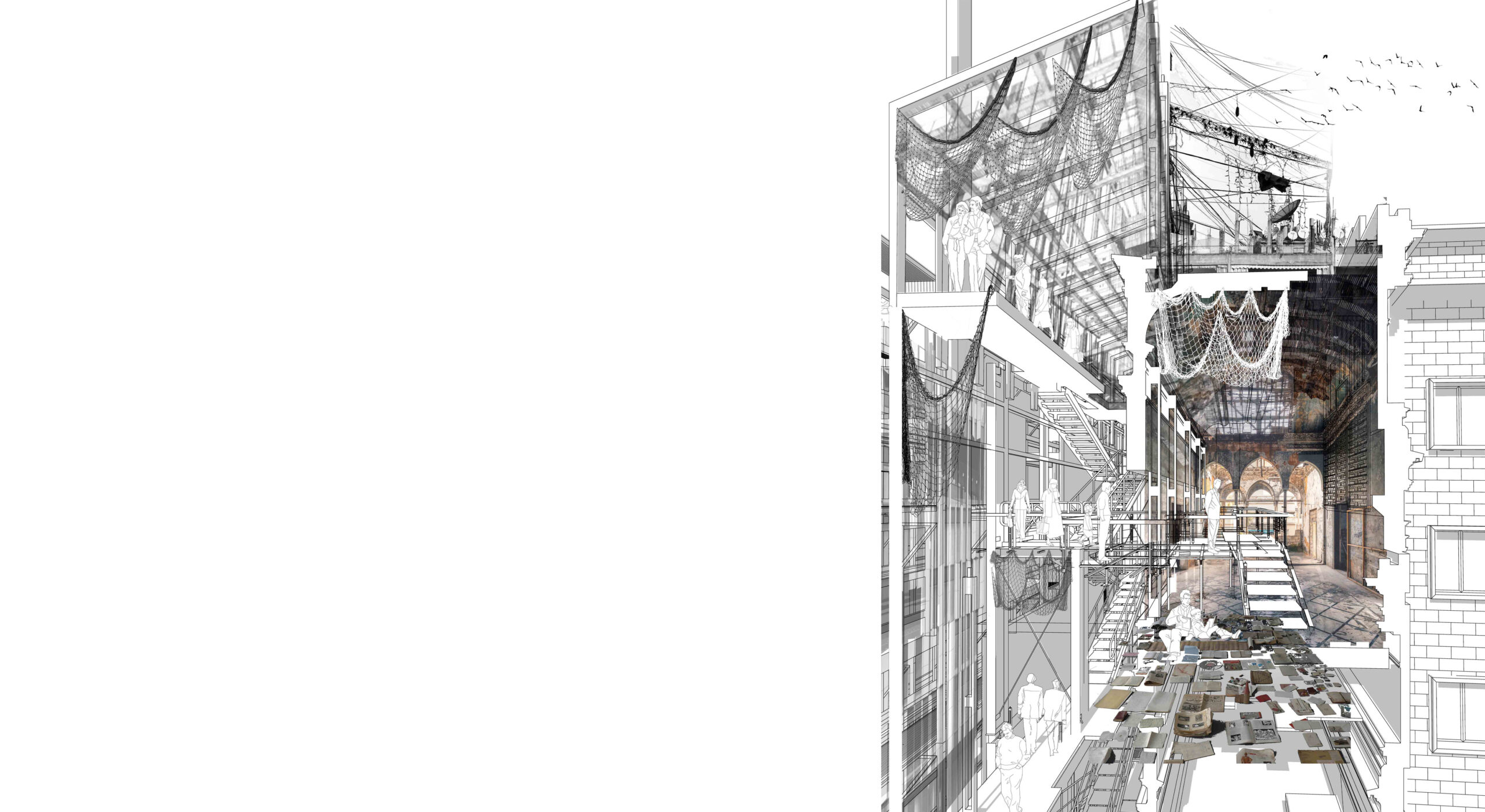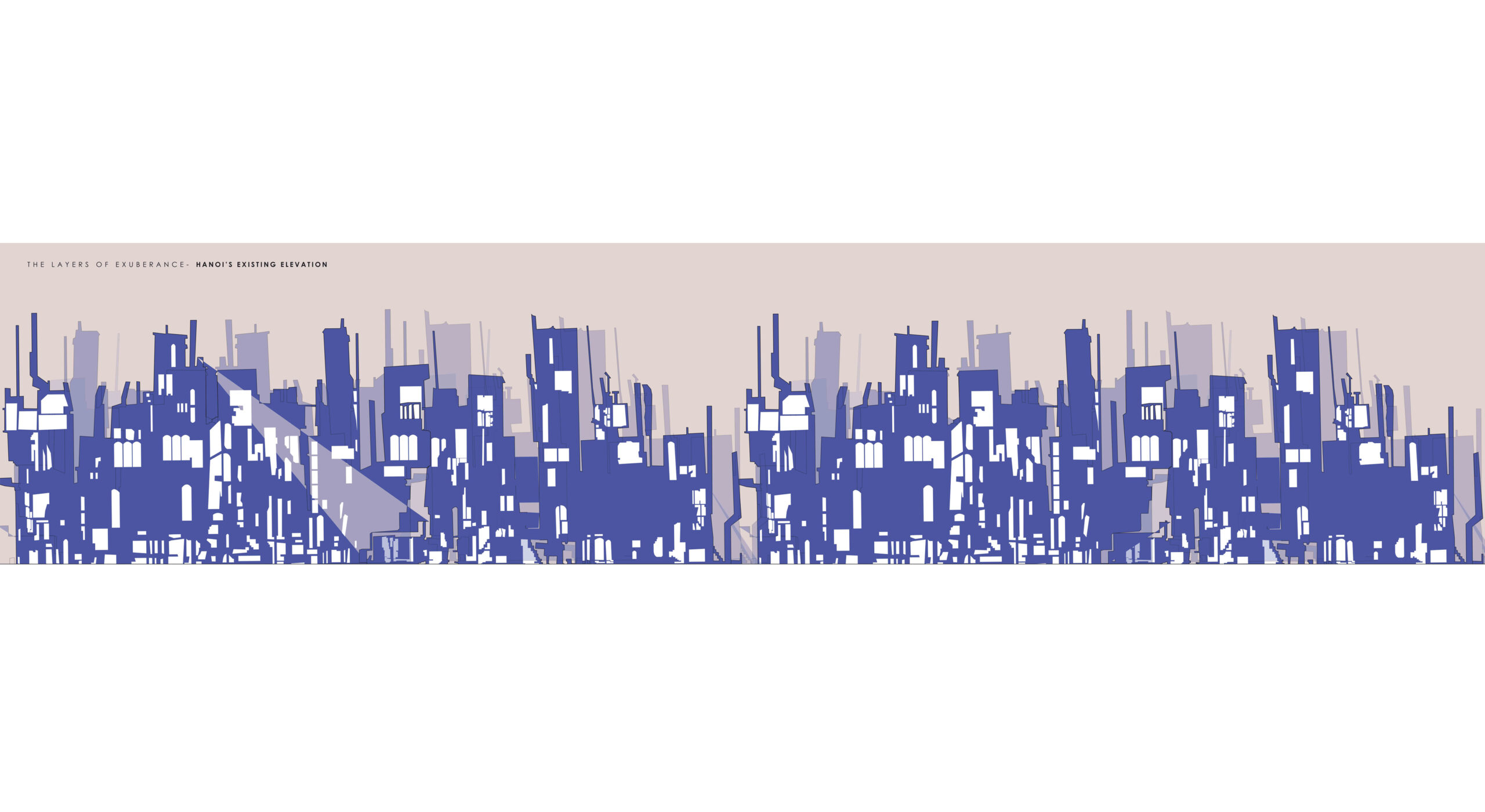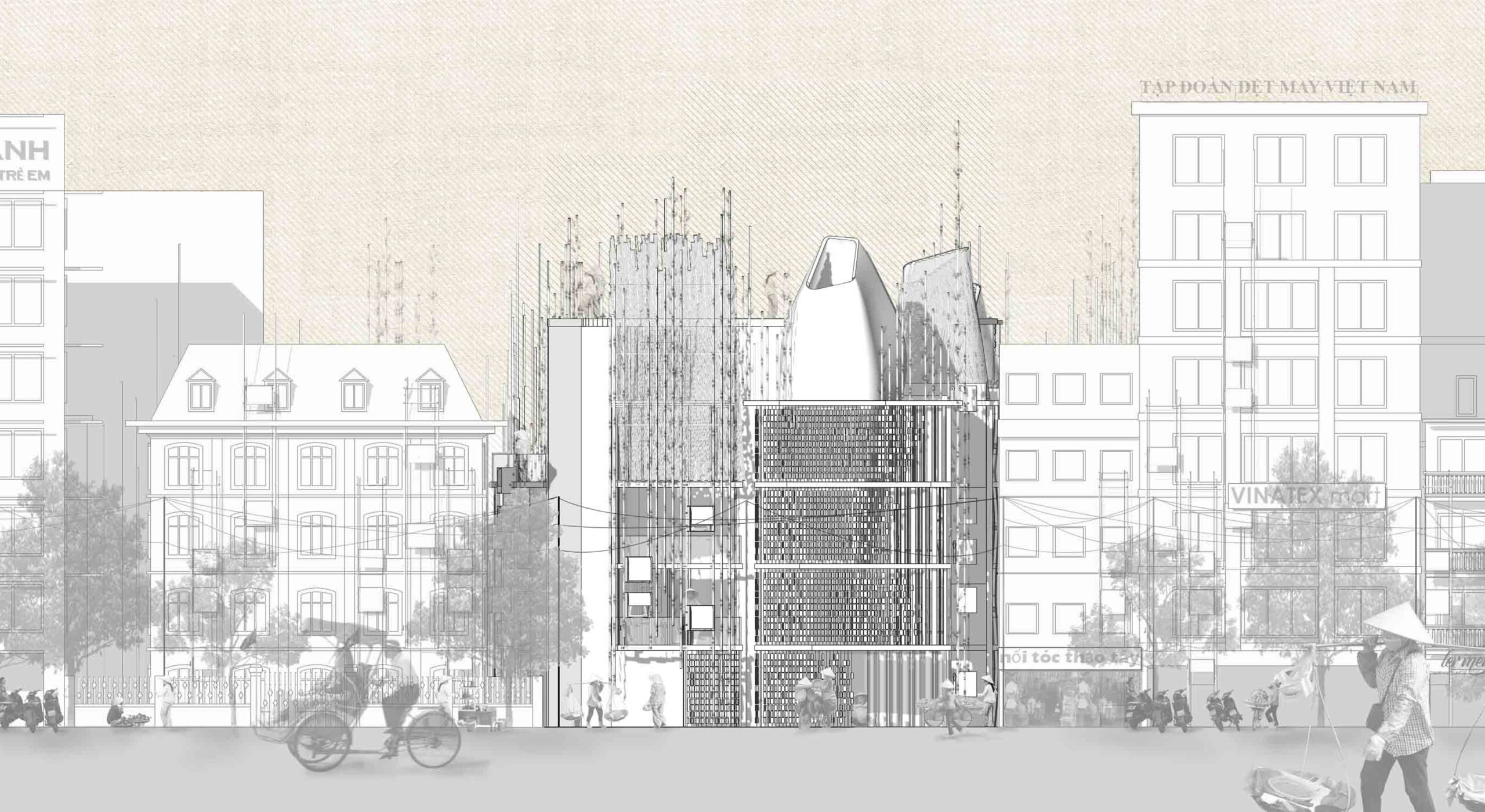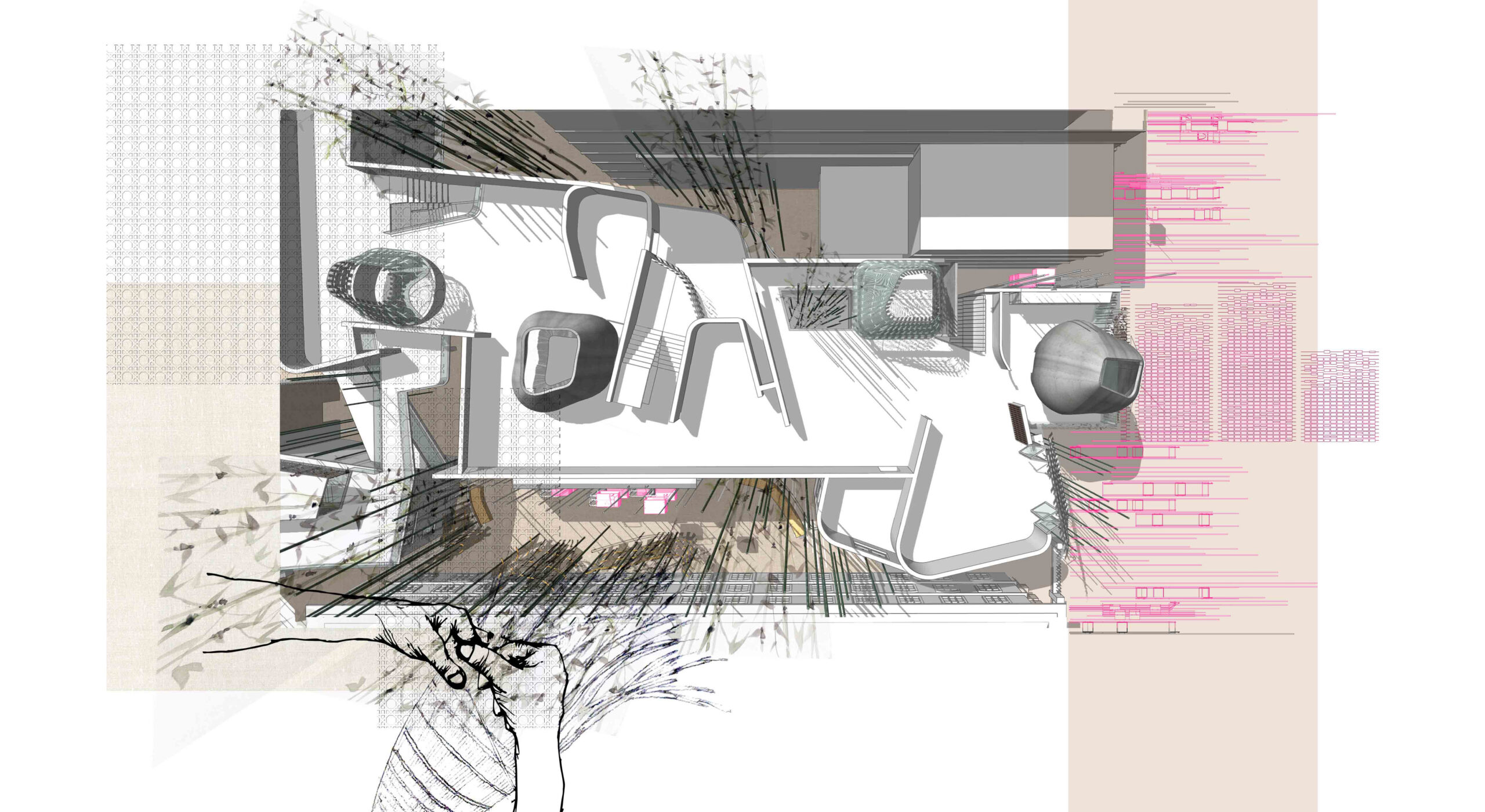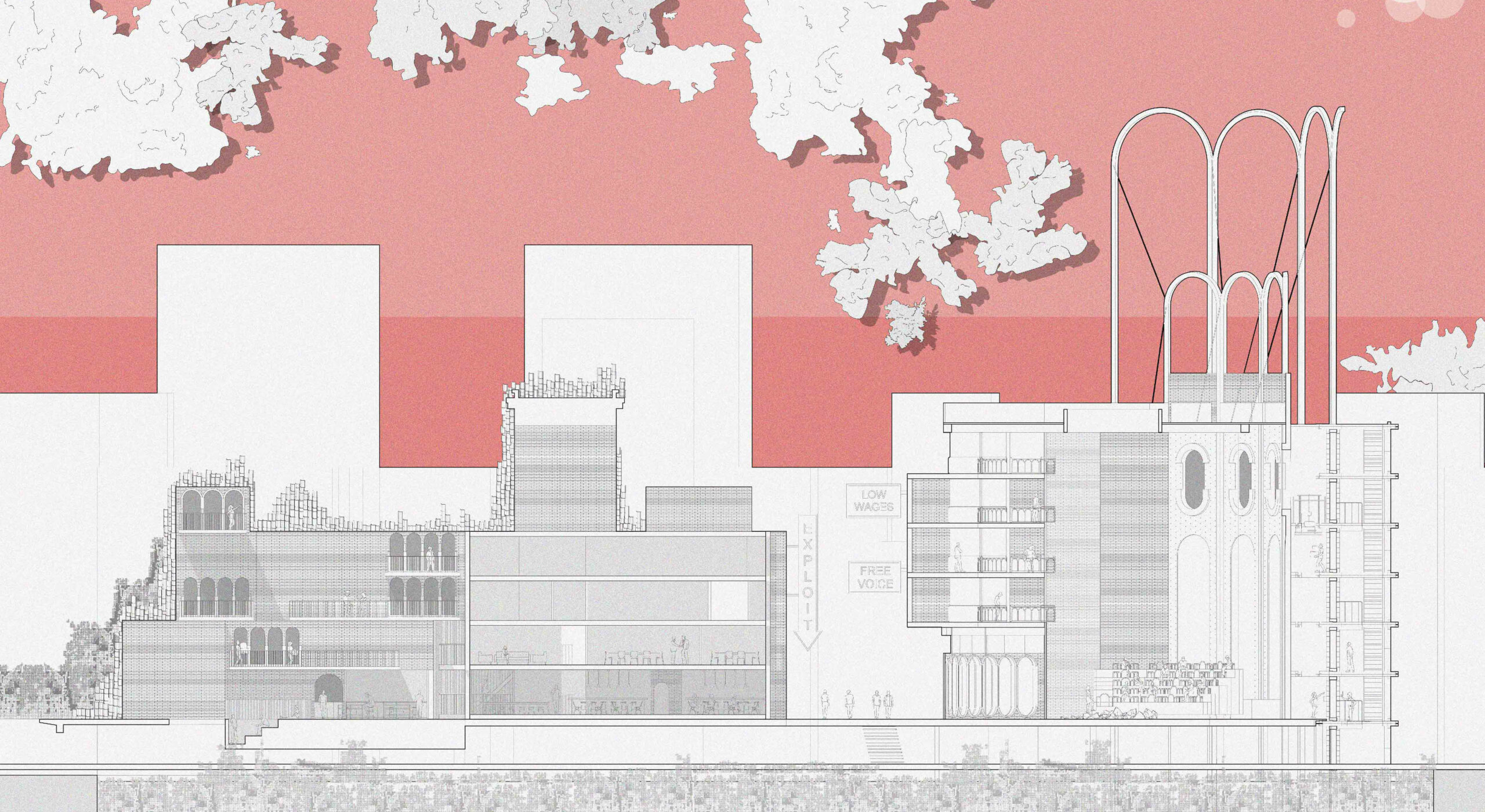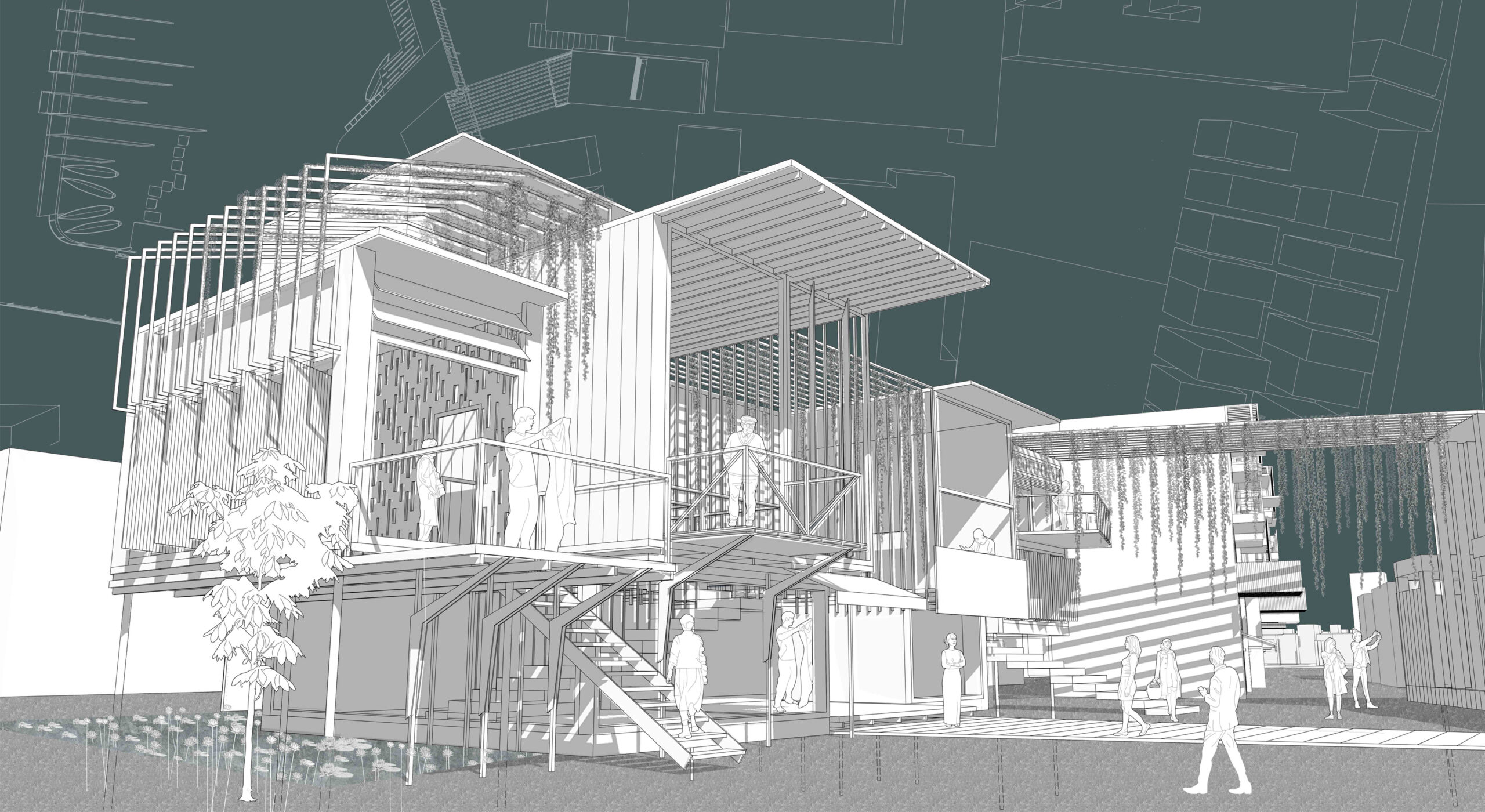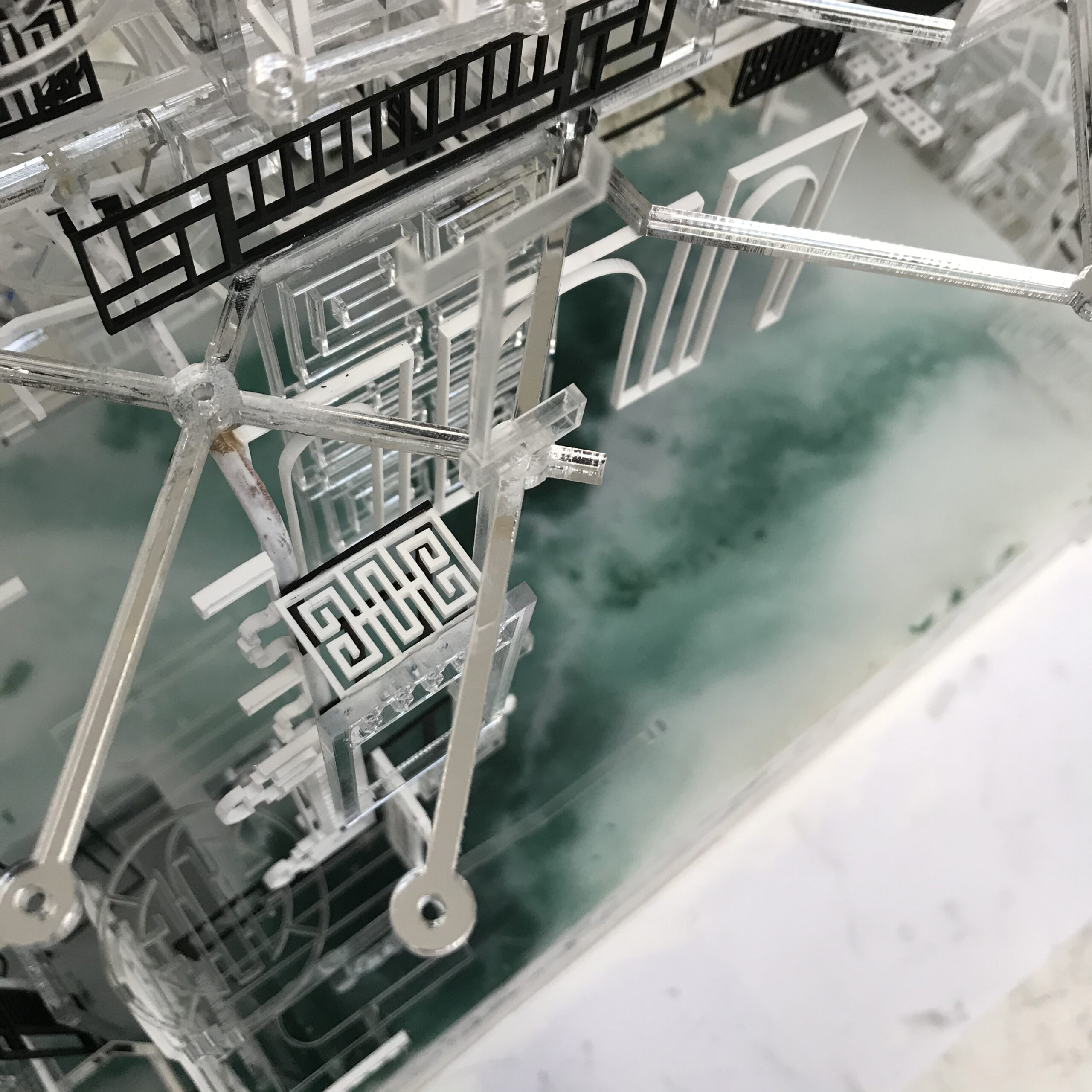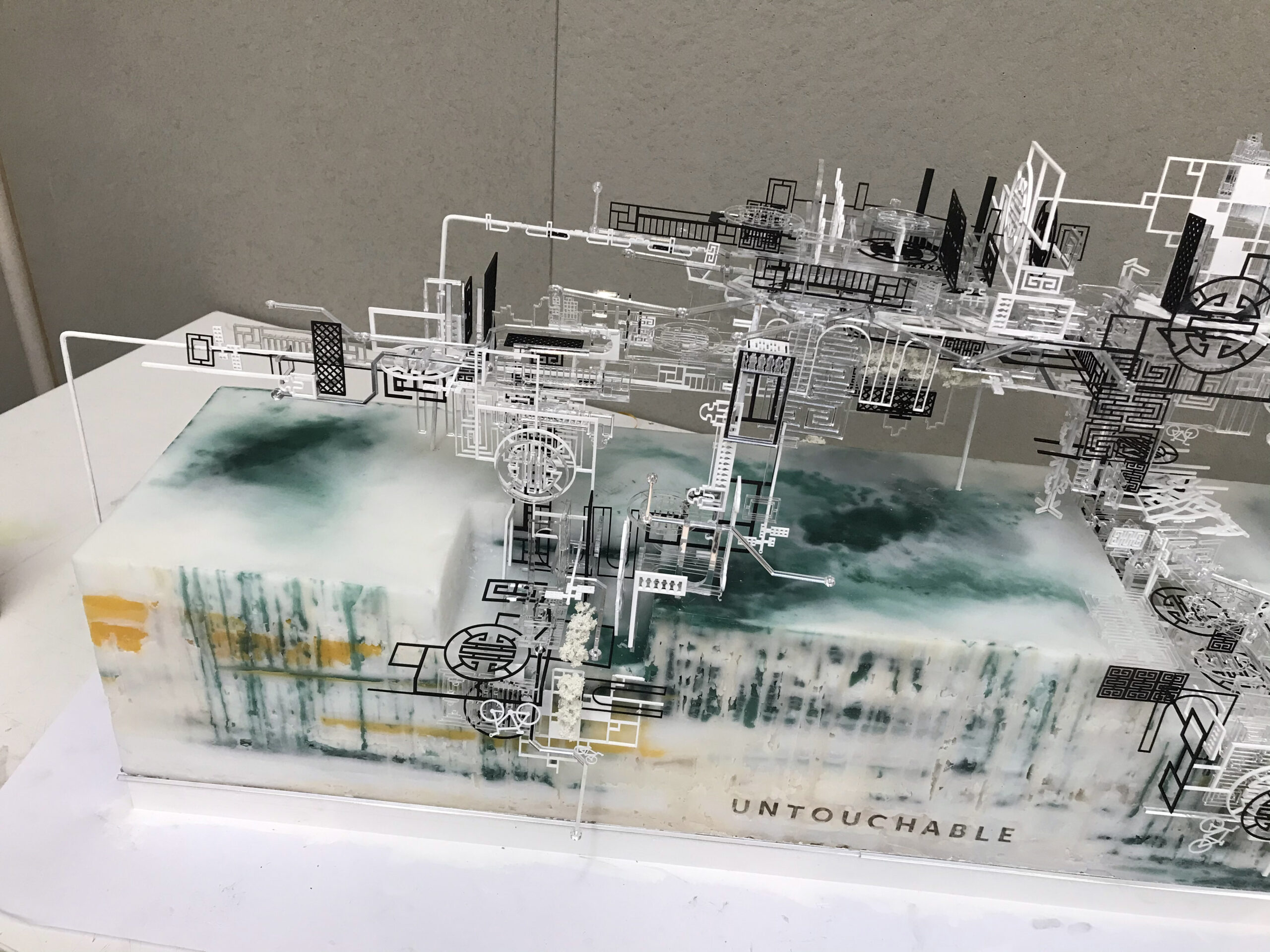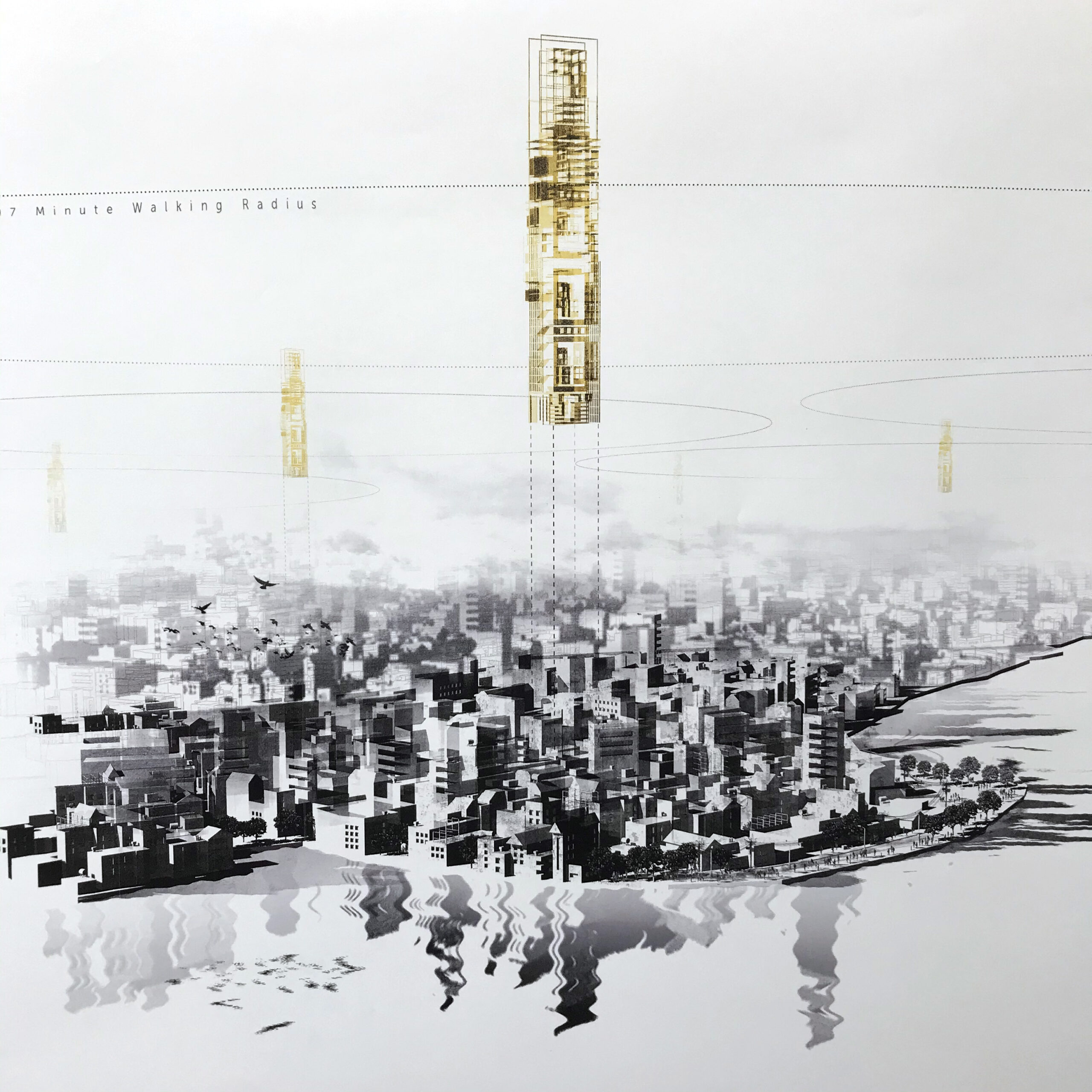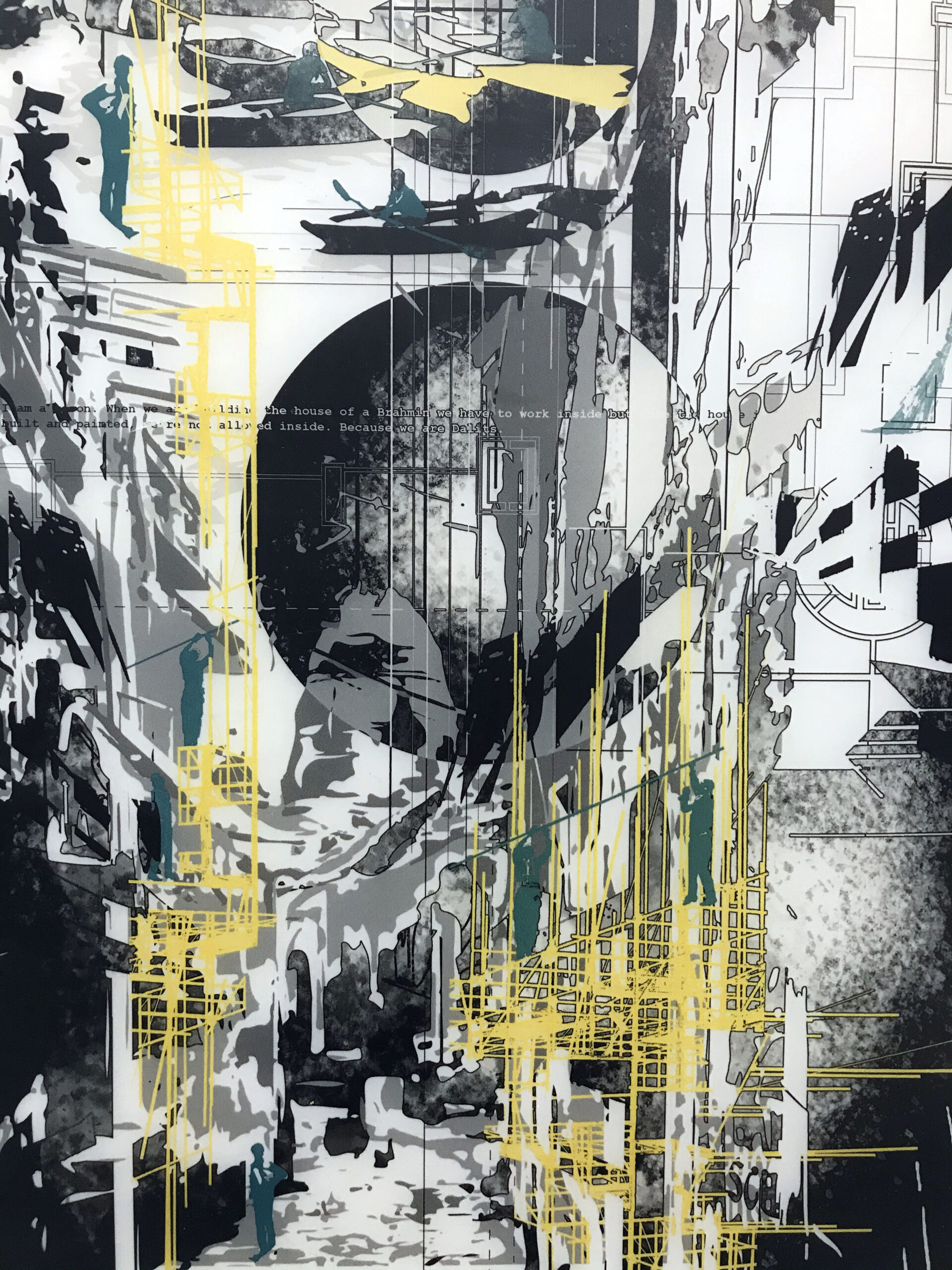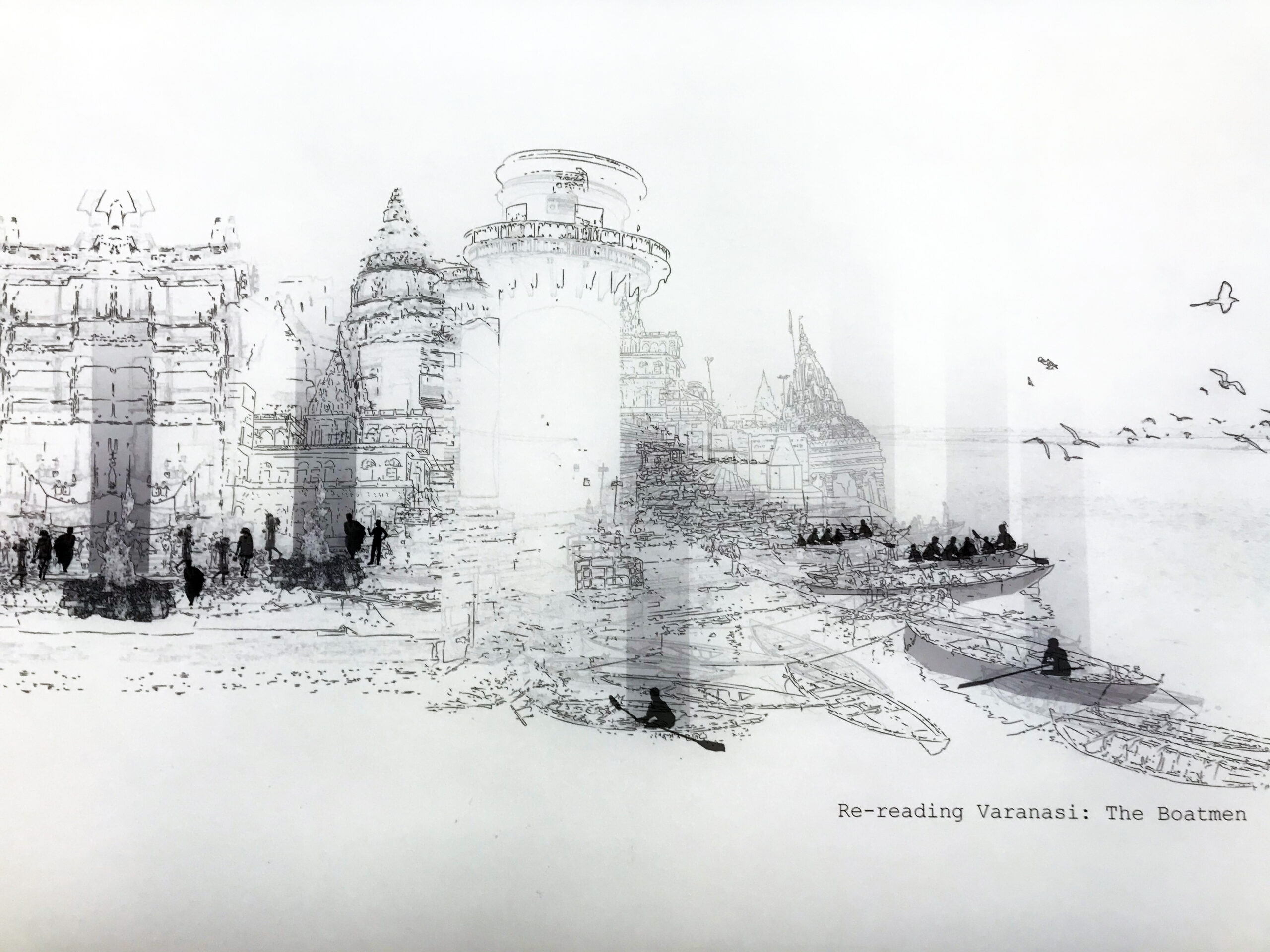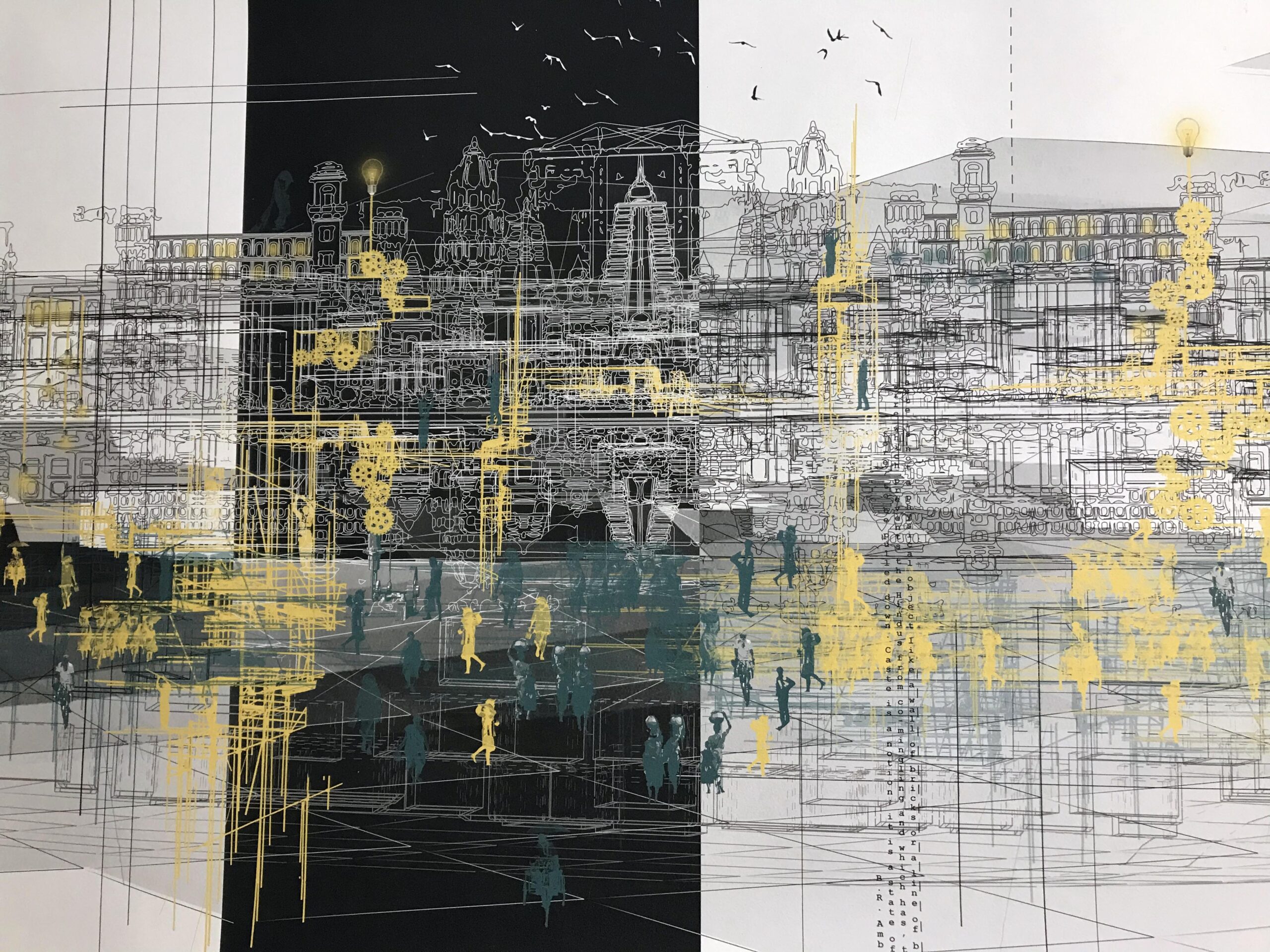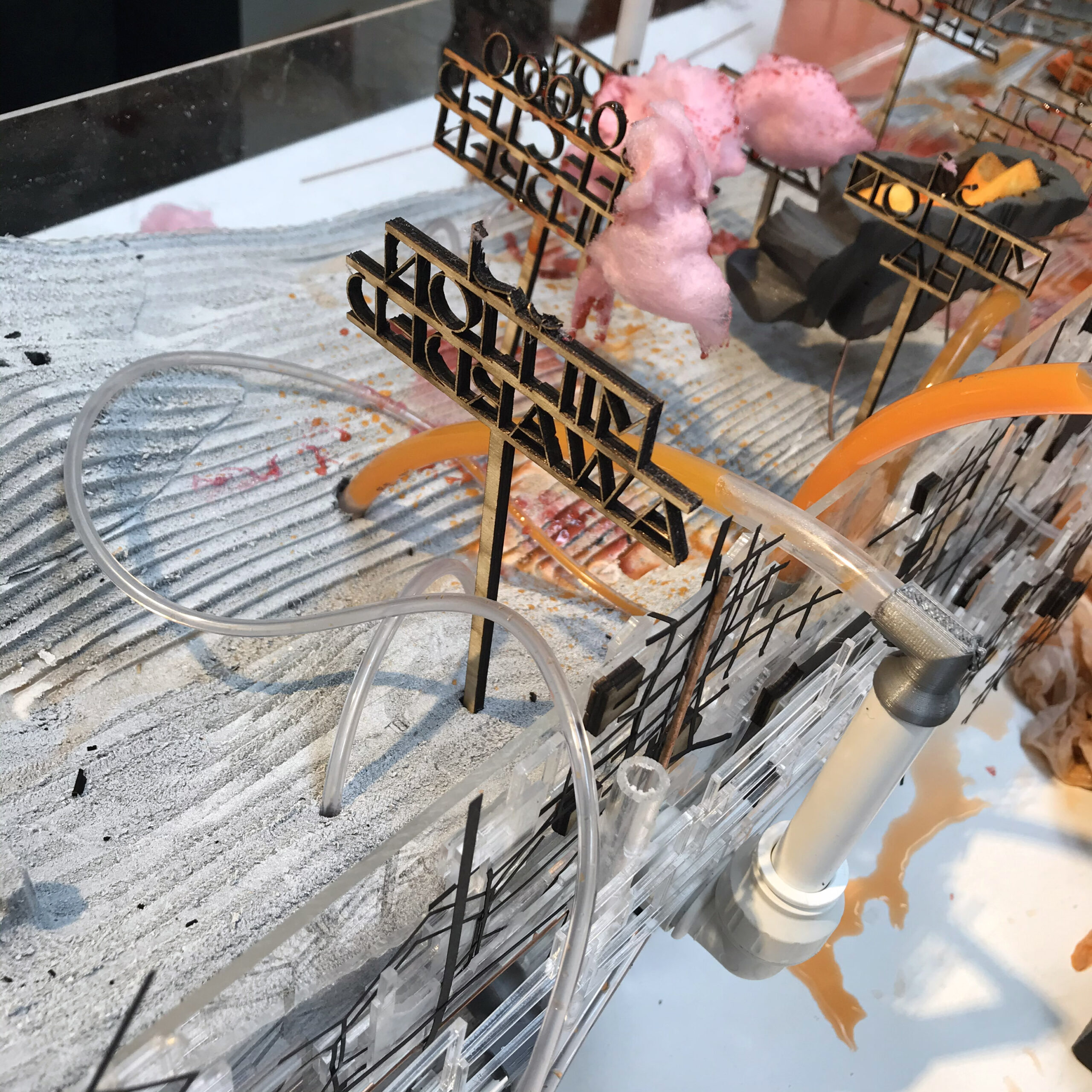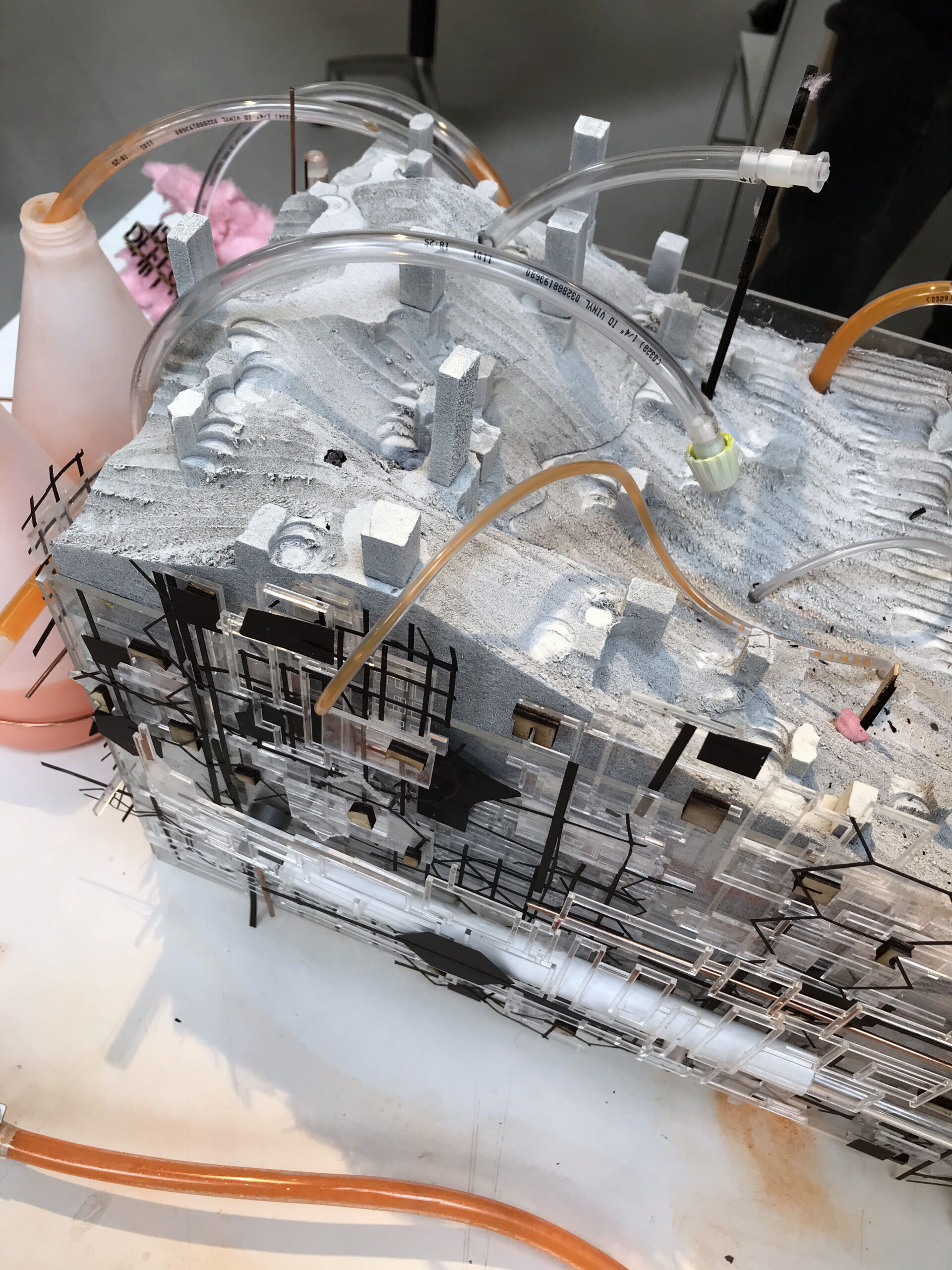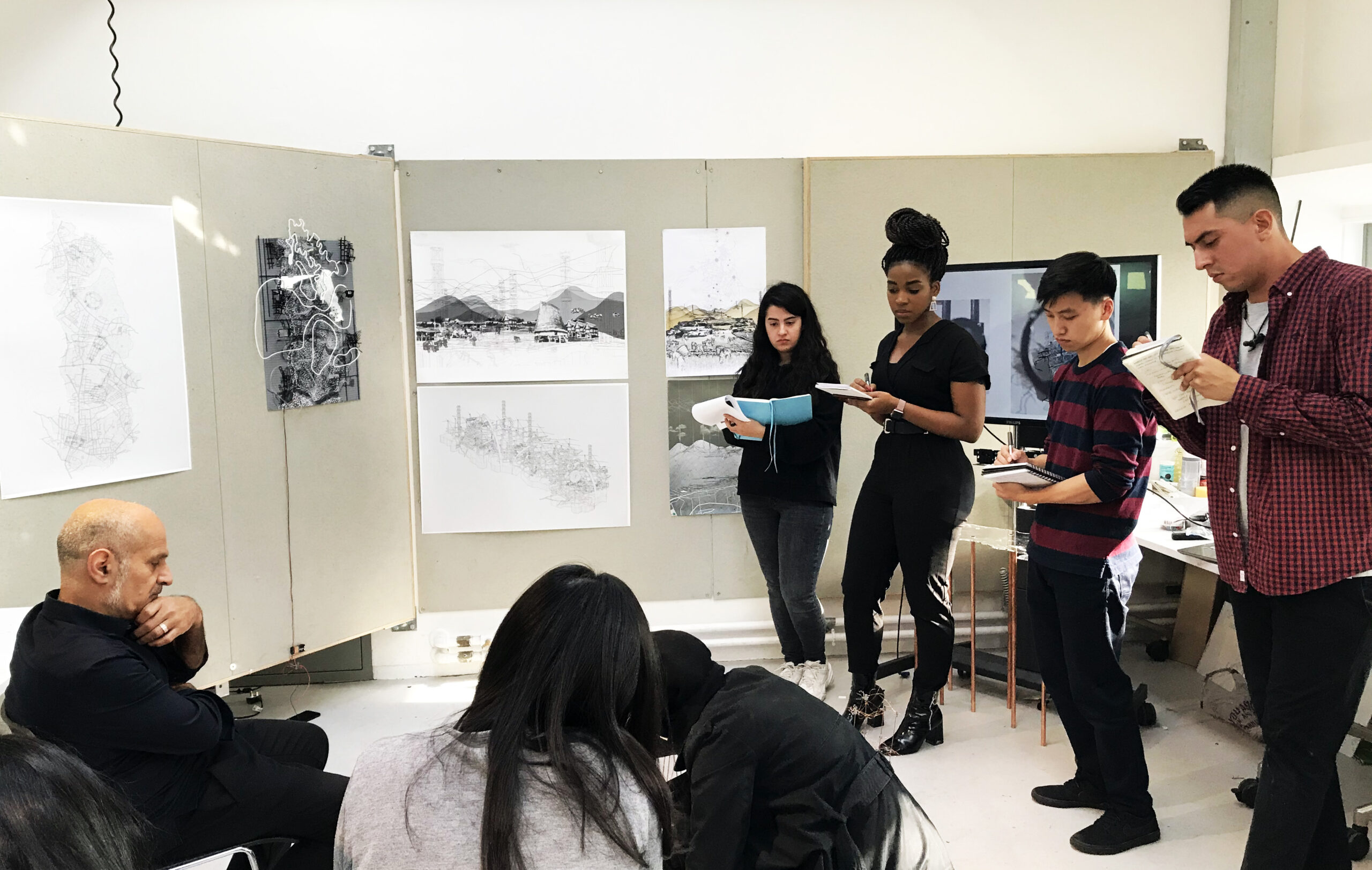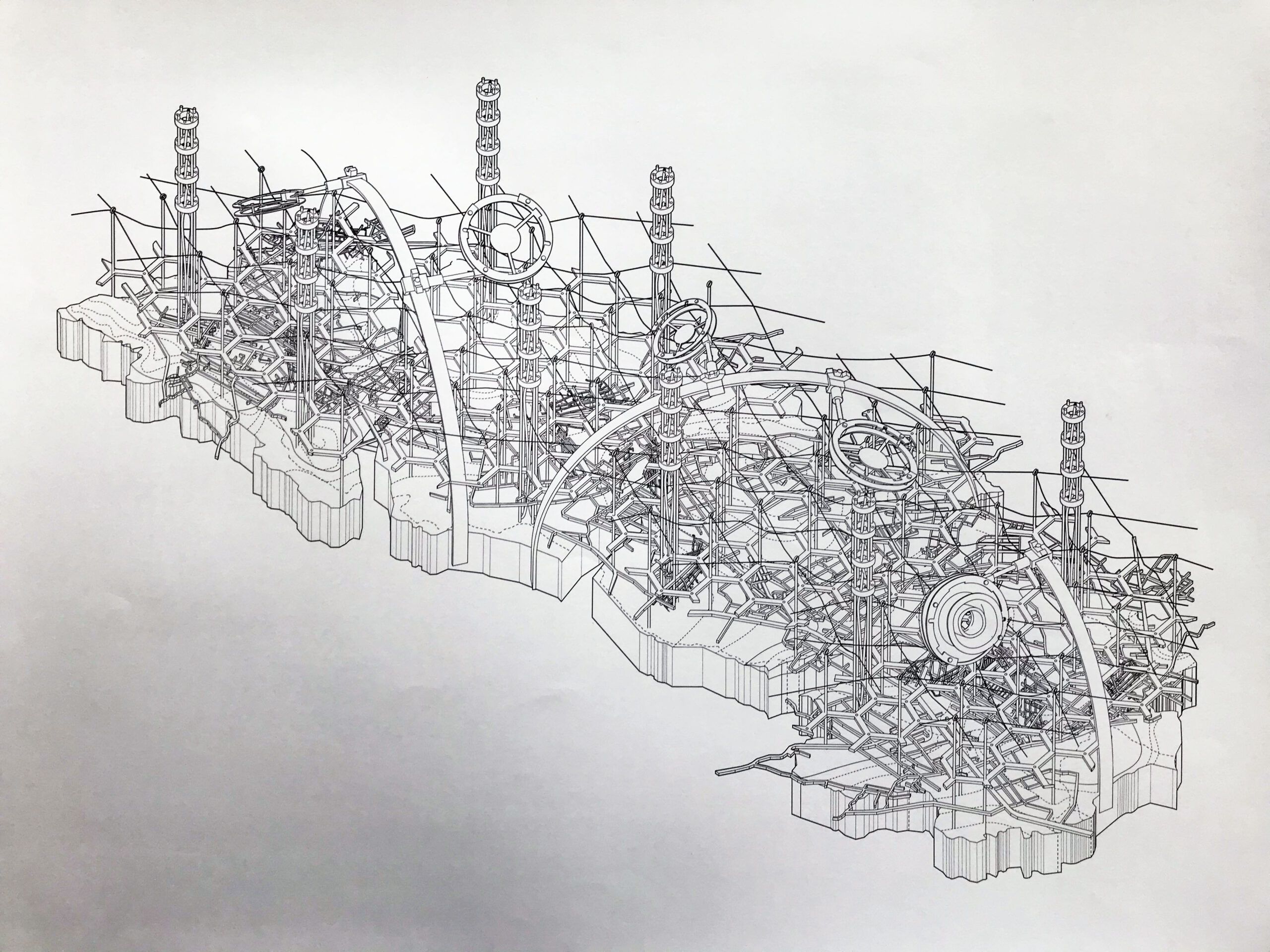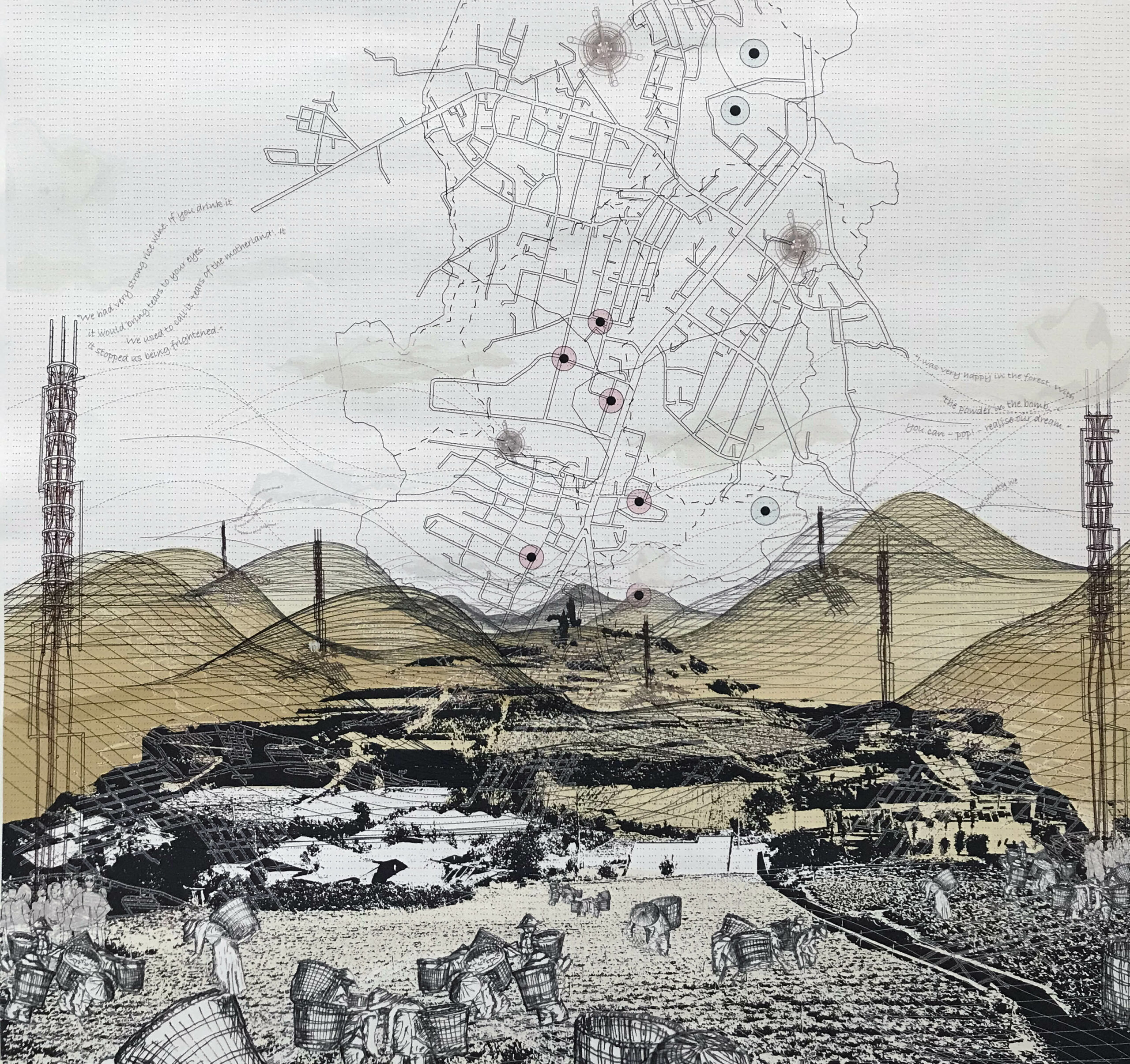Design Studio 22 ARCHIVE
Tutors: Nasser Golzari and Yara Sharif
Nasser Golzari and Yara Sharif are practicing architects and academics. Our work stretches between the UK and the Middle East, where we mainly look at design as a mean to facilitate and empower communities; all in search for spatial possibilities. Our design projects have won a number of awards including the 2016 and 2013 RIBA President’s Award for Research, 2013 Aga Khan Award for Architecture, 2014 Holcim Award for Sustainable Construction.
Resilient City: An Oasis Within a Fractured Landscape
The city we call home; is facing a radically different future full of uncertainties and economic volatility. Nothing seems stable; fake news, misinformation, climate change, Brexit, disappearing species. After 10 years of economic recession, we are in danger of even more recession and alienation. With the increase of poverty, food banks, privatisation of our public health, lack of fair access to basic human rights, it is time once again within the context of architecture, that we question and rethink this and imagine a better future inclusive for all.
Introduction
At a time of scarcity, economic, political and environmental uncertainty, it is time once again, within the context of architecture, that we question and rethink our cities, and imagine a better future inclusive for all.
This year, DS22 wants to envision an ‘Oasis’ within the fractured landscape as a new ritual for a collective. While interrogating the notion of Oasis, we will reconstruct new social narratives and architectural prototypes to inhabit the city; new resilient means of living, new modes of collective that place the community on the front line and challenge the commodification of our resources and basic rights.
Project 1
- Working in small groups, you will interrogate and select a notion of an Oasis to inform the concept of the device. This will be your line of departure, to design and make the device. The device can infiltrate to expose or exaggerate the fractured reality, or it can form a starting point to create the resilient Oasis.
- Write your own manifesto: the process of making and exploration of the Oasis will then set the basis for your own personal design brief and individual main project.
- The site research and site strategy for project 2 will conclude.
Field Trip
The led trip will be to Vietnam/Hanoi; a resilient city that has gone through series of economic and political isolation. Despite the fractures, Hanoi has managed to bounce back with resilient spatial practices.
Project 2
- Building on the conceptual ideas and symbolic meanings of the OASIS derived from your findings in Project 1, you are to consolidate your manifesto and building brief by developing your own Oasis.
- Your proposed inventions are to offer new typology for a collective by engaging with the social and spatial realities of the context.The proposals/ building, should aim to bring to the surface the absent communities, which have been excluded
- You are to exaggerate, amplify, divert, subvert and/or provoke these cities to draw attention to the realities there and offer new imaginary scenarios of change
Site
While London and Hanoi will be our key sites of investigation, the second years can choose their own site for Project 2 subject to discussion.
Why Oasis?
The Oasis is defined in some dictionaries as a heaven in the desert for travellers. Metaphorically, however, the Oasis is associated with refuge and relief. A space of self-healing and production. It can be seen as a mean to facilitate movement and diversity. A prospect of escaping necessity. It dissociates with desert to offer a fruitful place that provides opportunity to sustain life. It challenges wilderness to offer ‘secure resources’ and create order. The Oasis is generally seen as a symbol of protection and comfort.
Given the vulnerable microcosm that we live in today, we need to present new forms of engagement with the surroundings, new resilient landscape; one that bounces back from the current crisis to empower its community and equally, interrogates new means of habitation. We, therefore, see the Oasis as a new typology that can exist to challenge the fractured city. While one creates uncertainty and economic scarcity, the other should construct security, permanence and empowerment.











